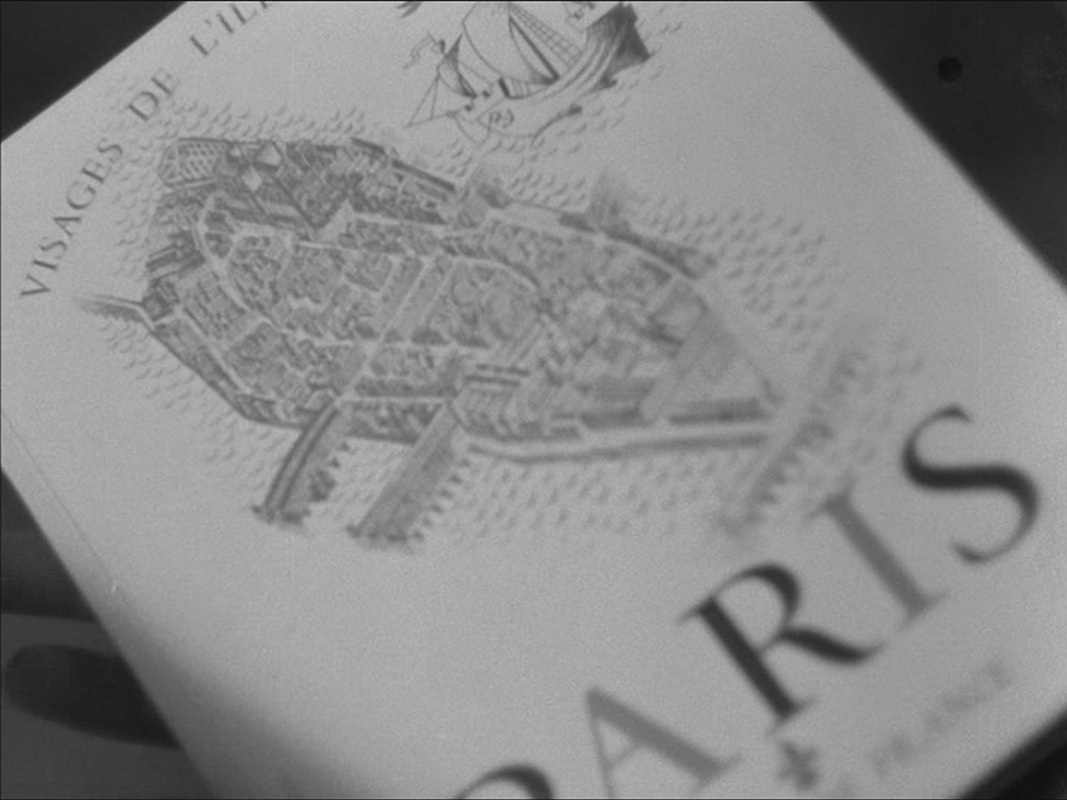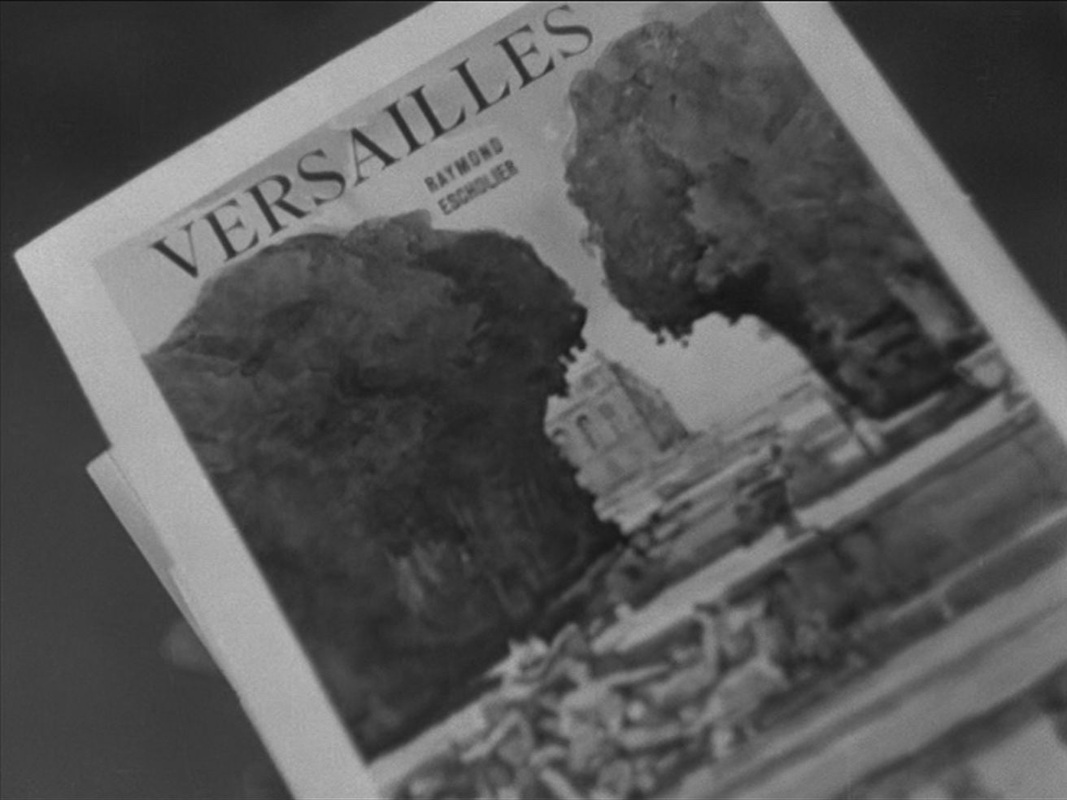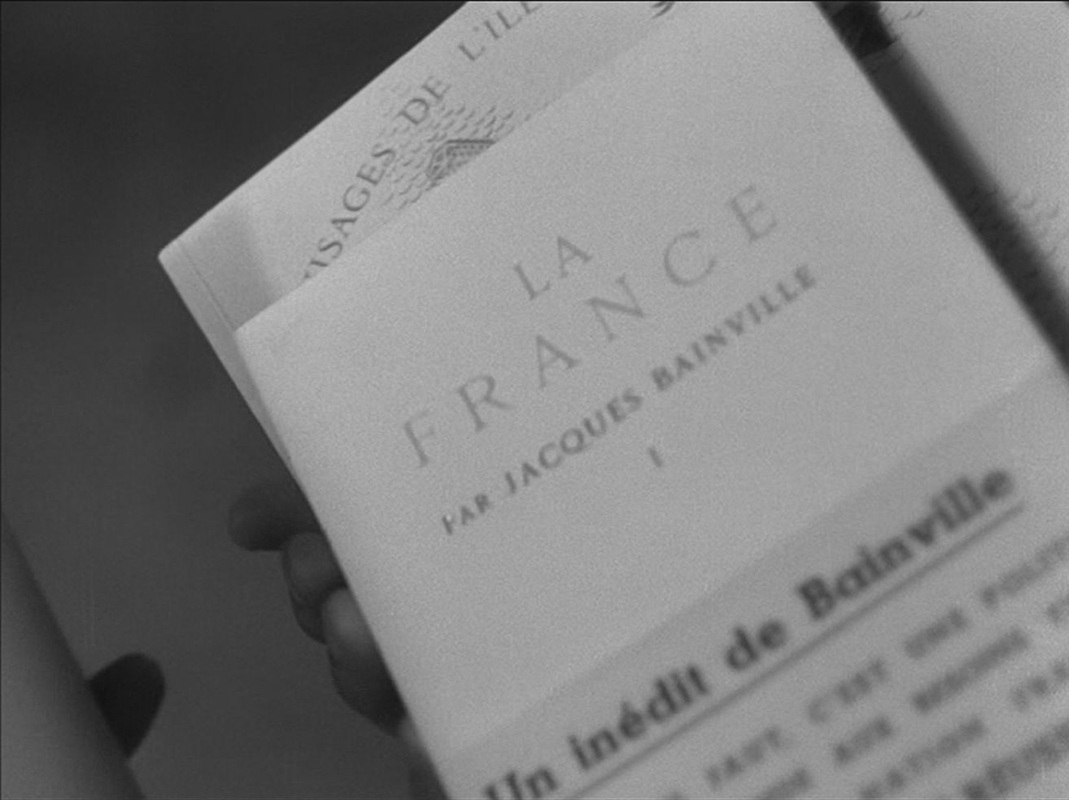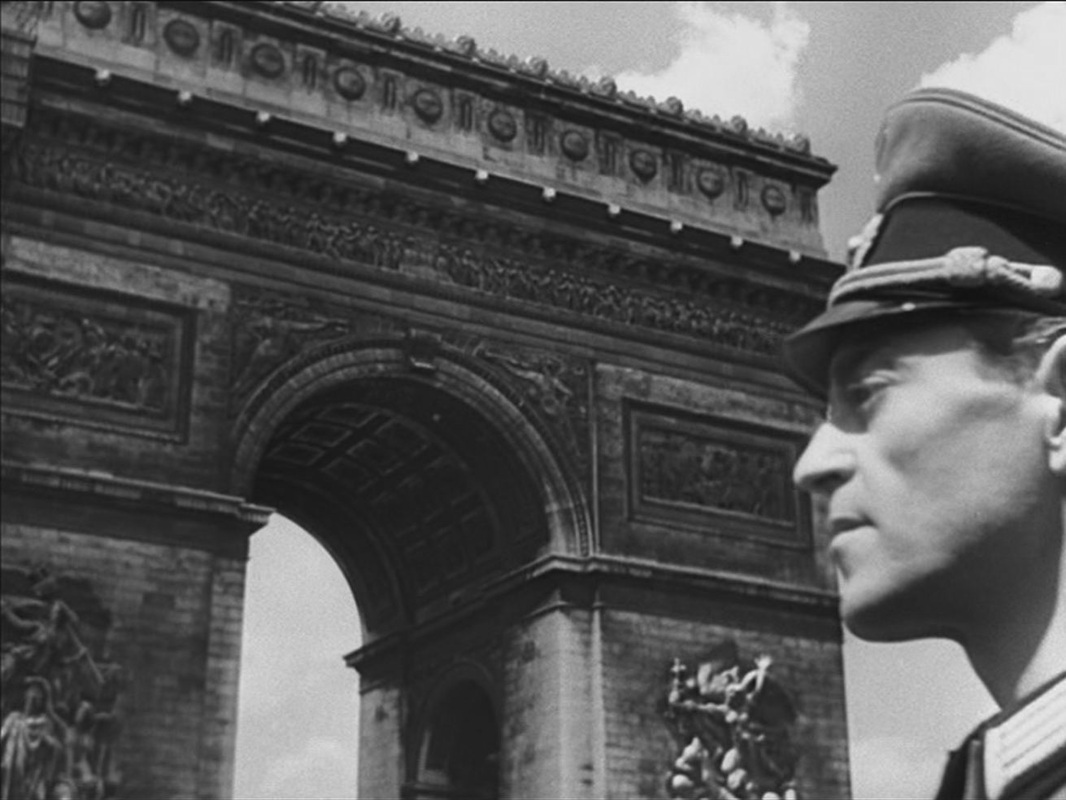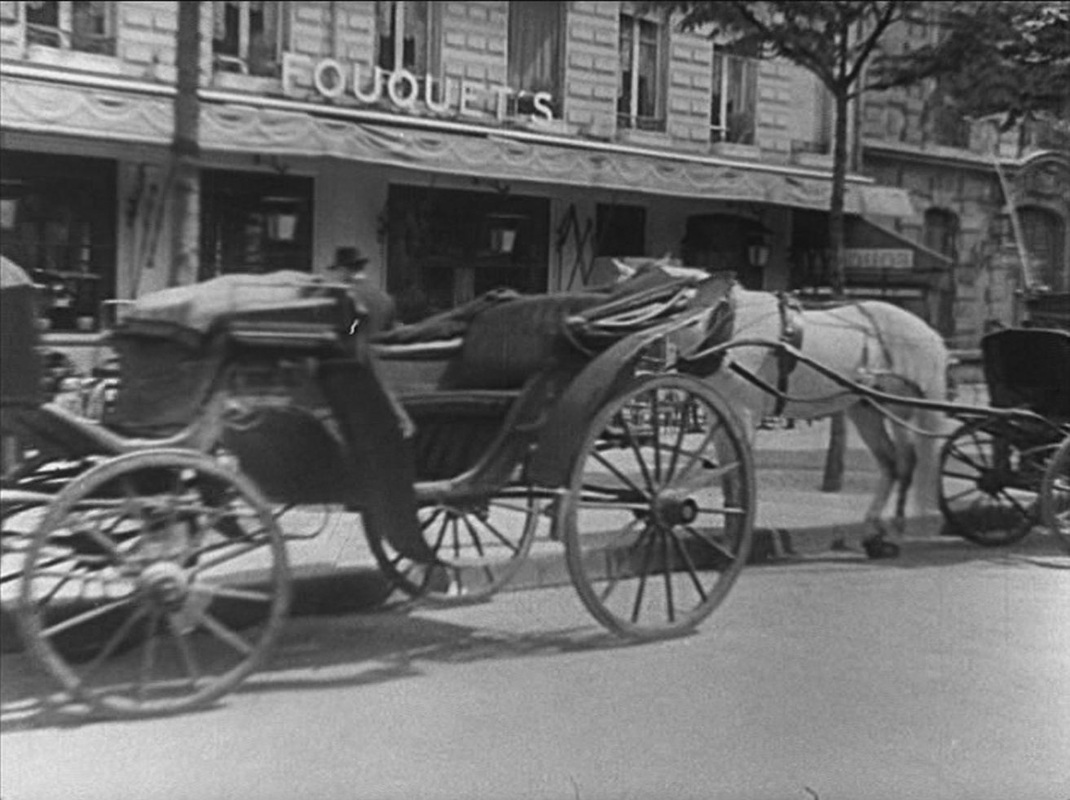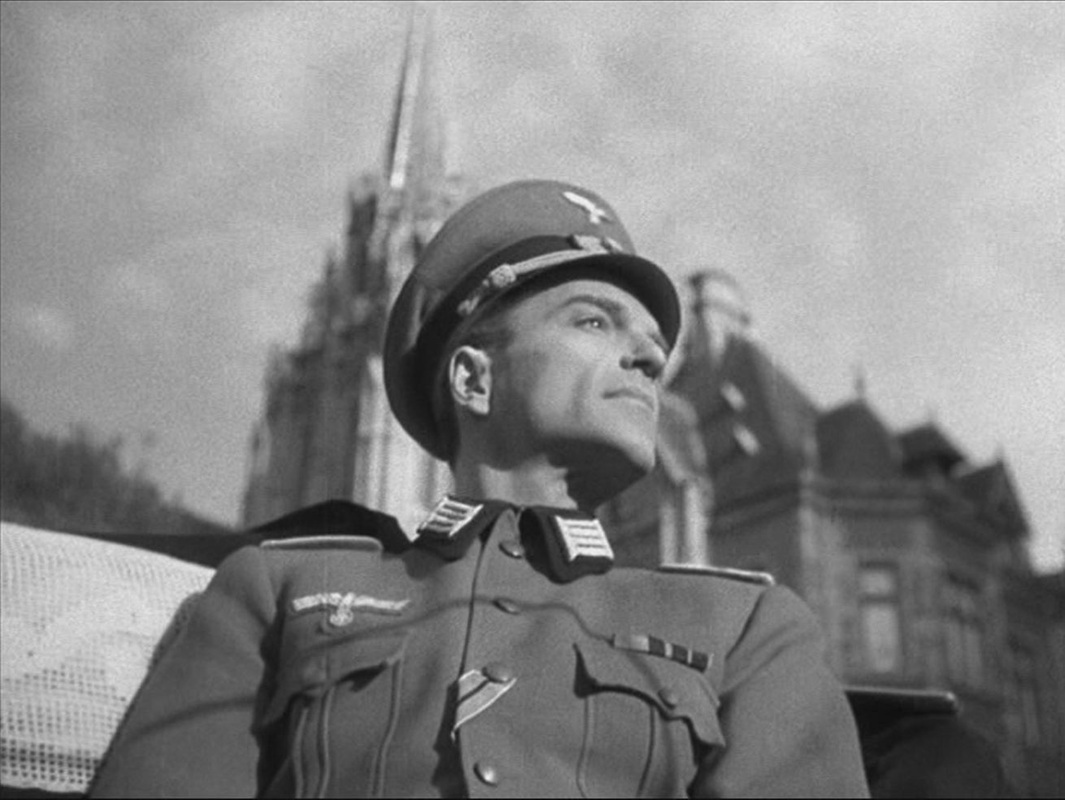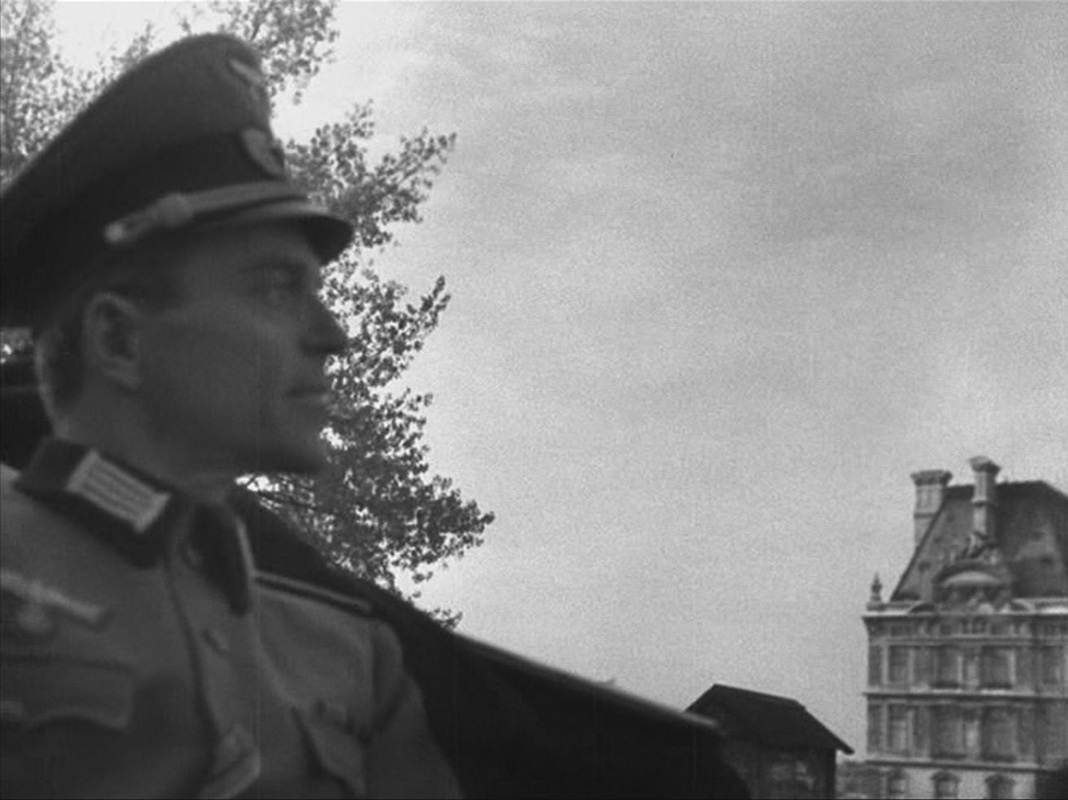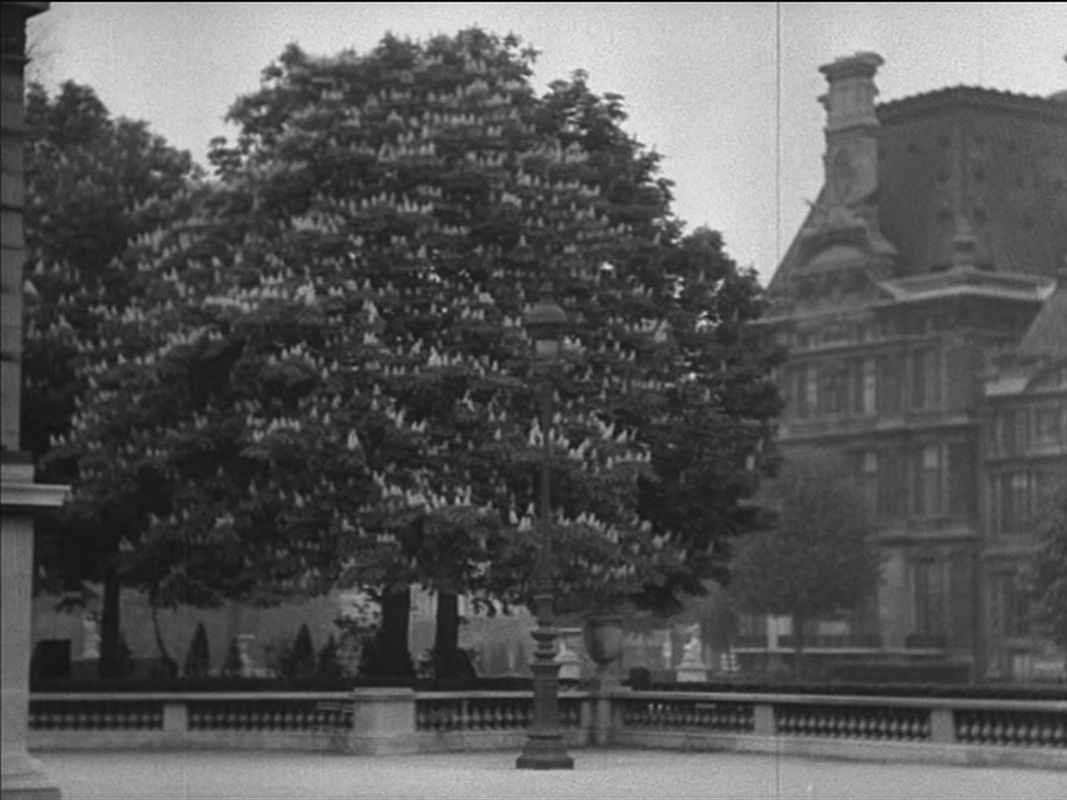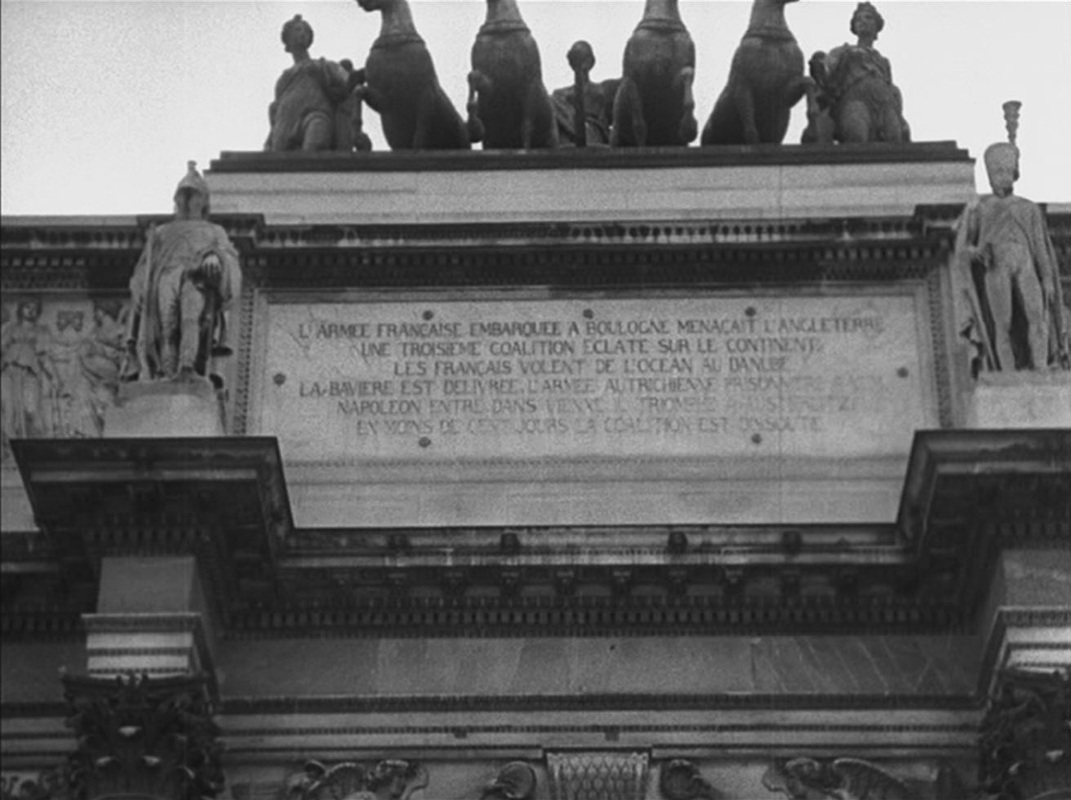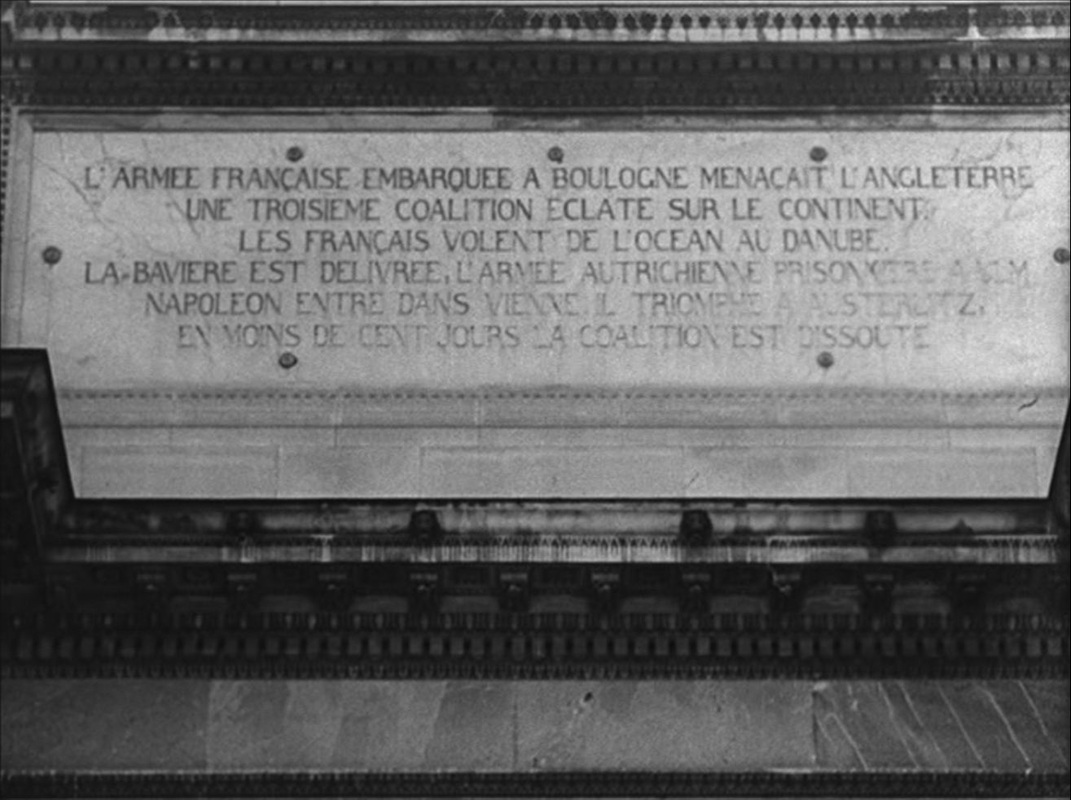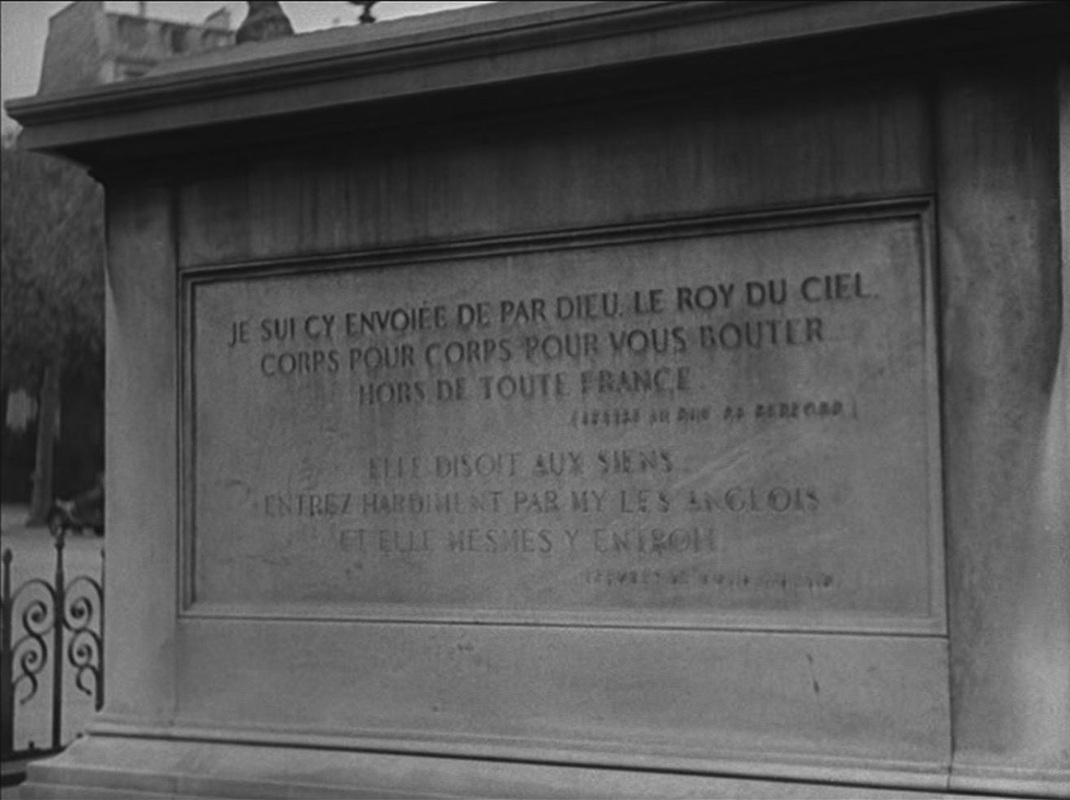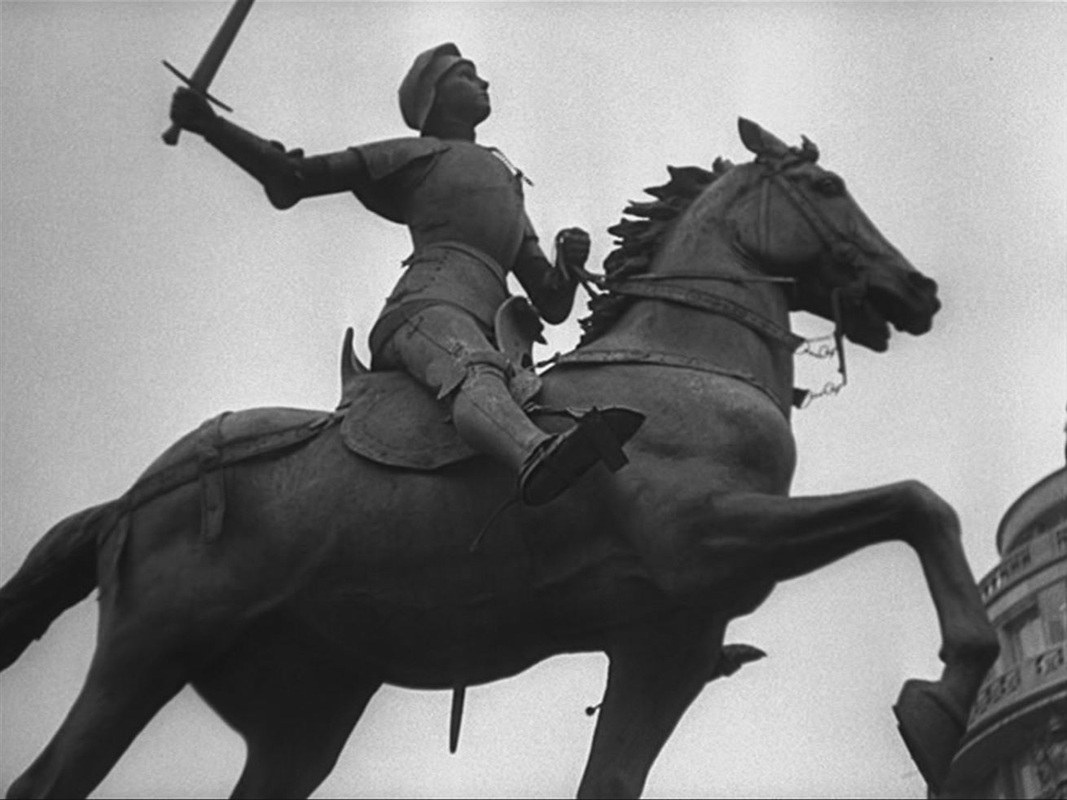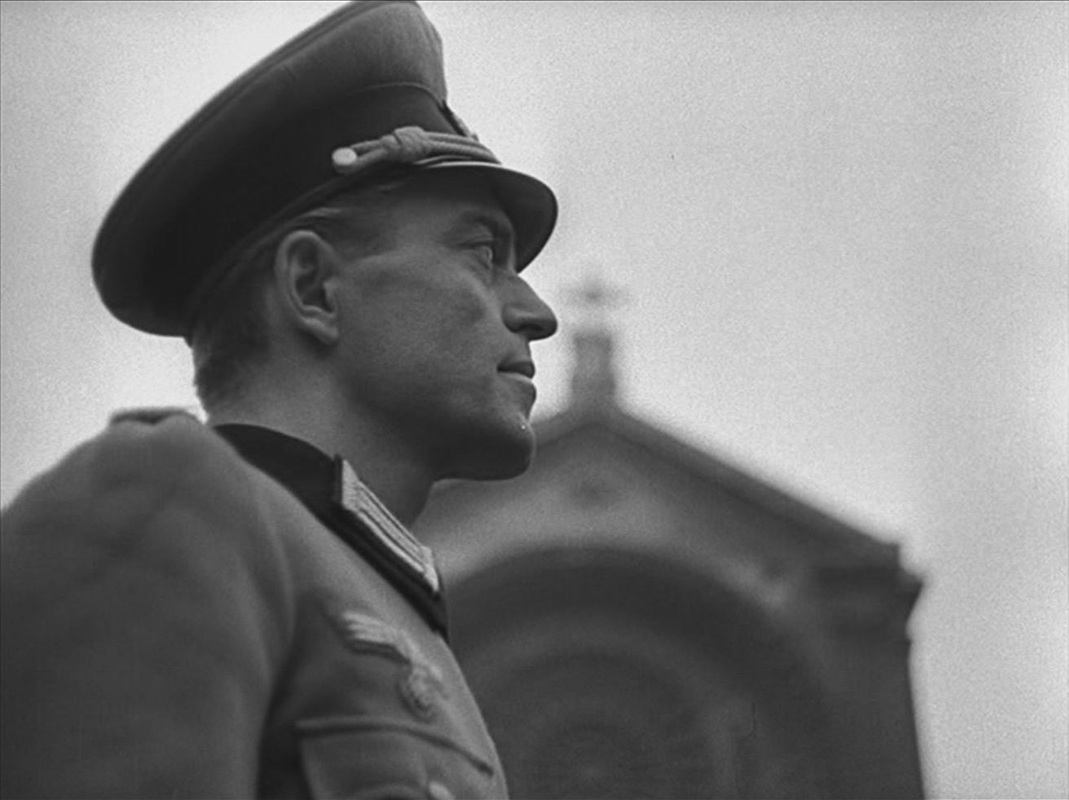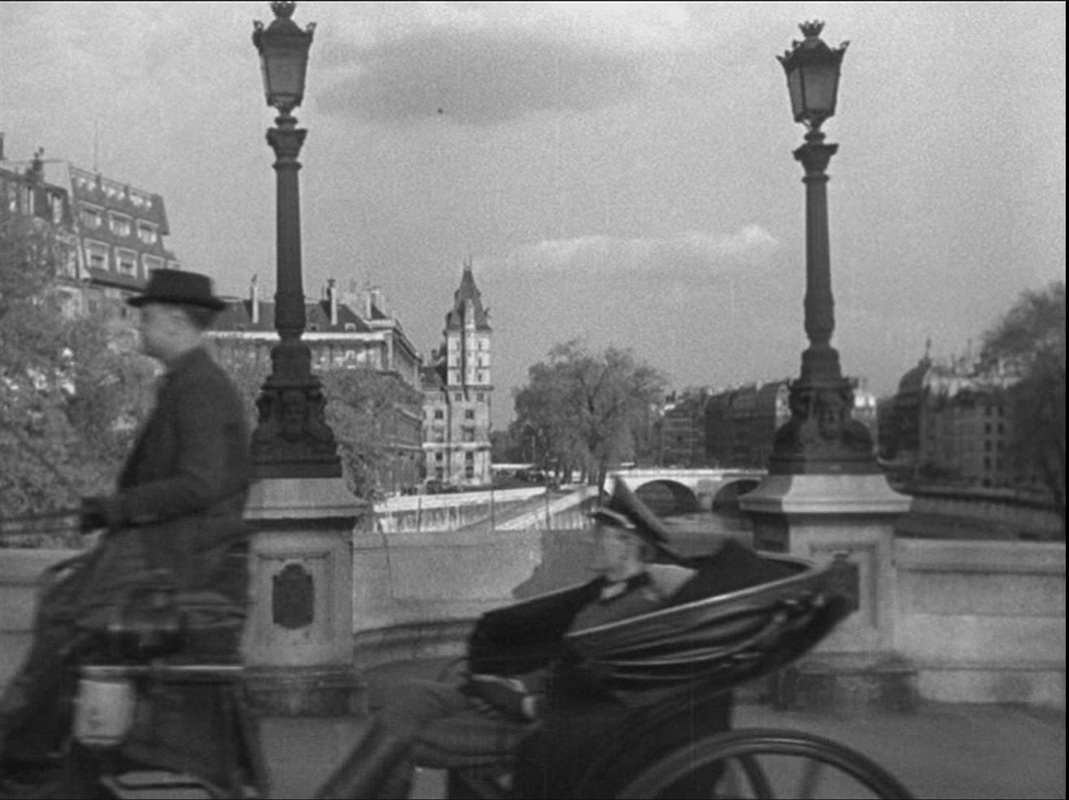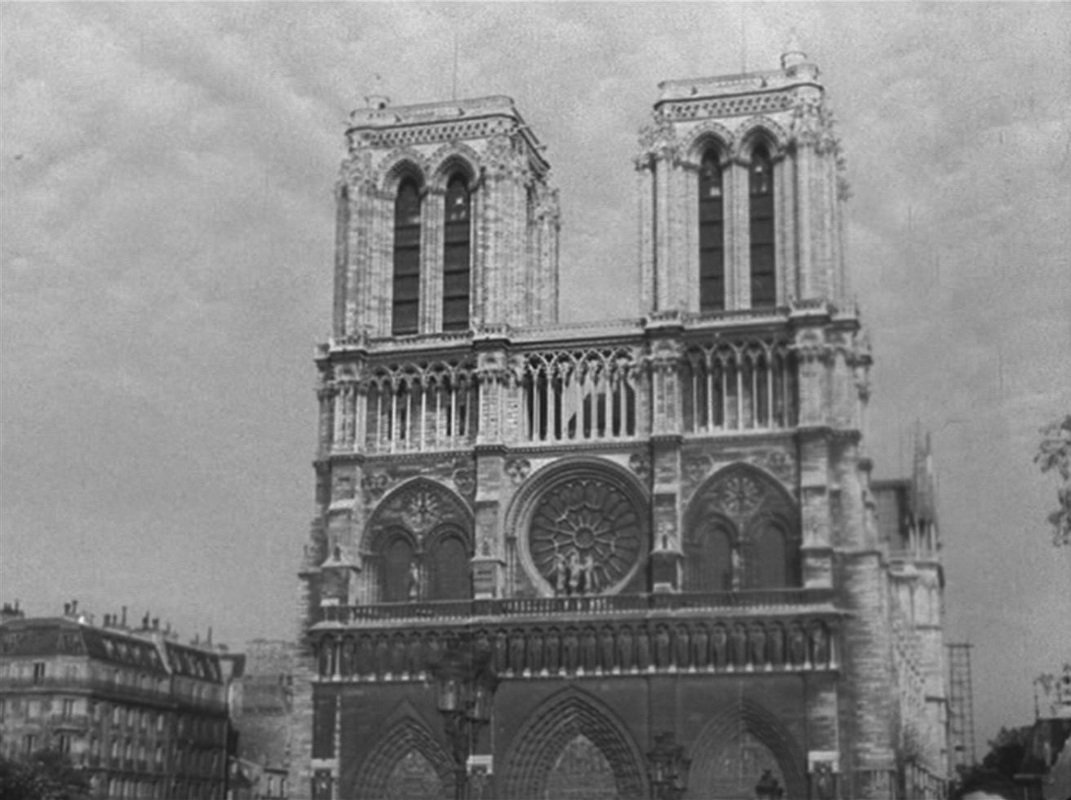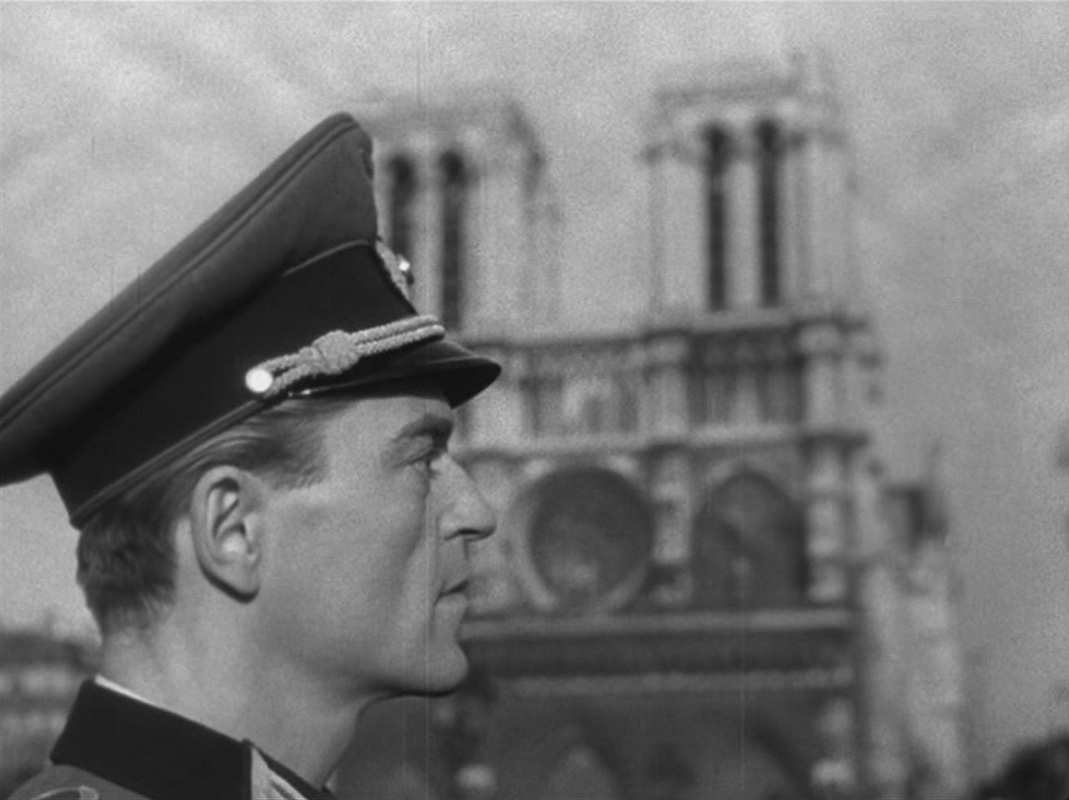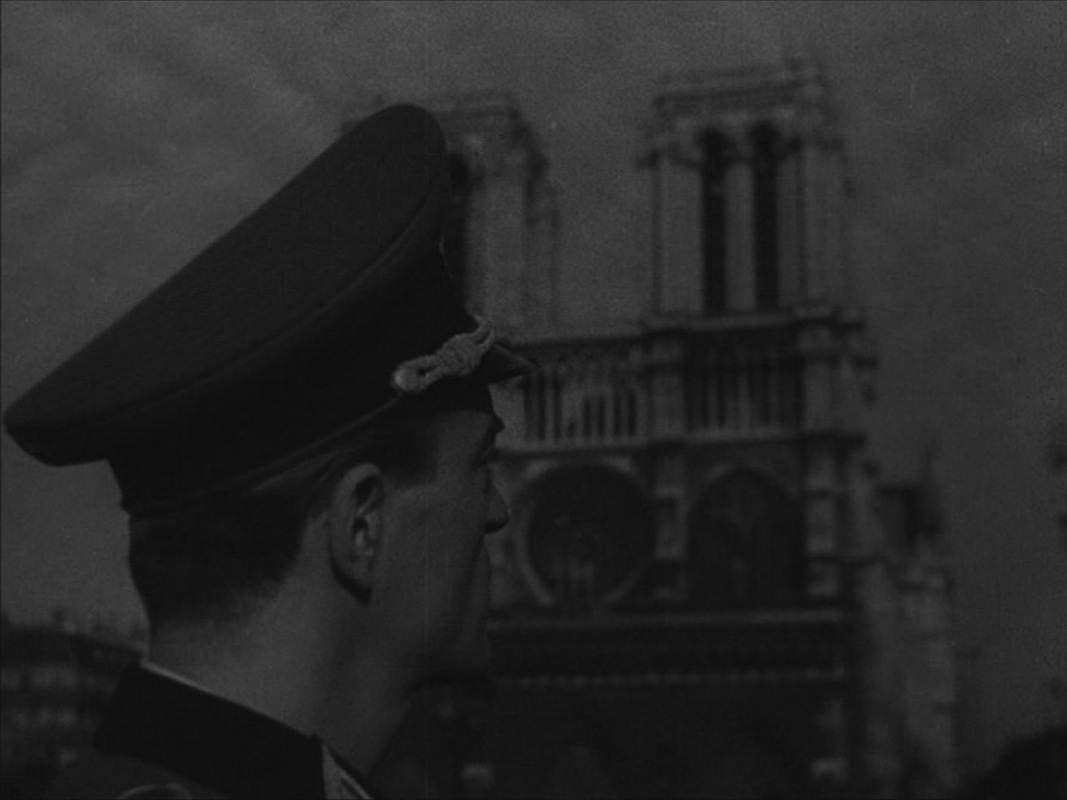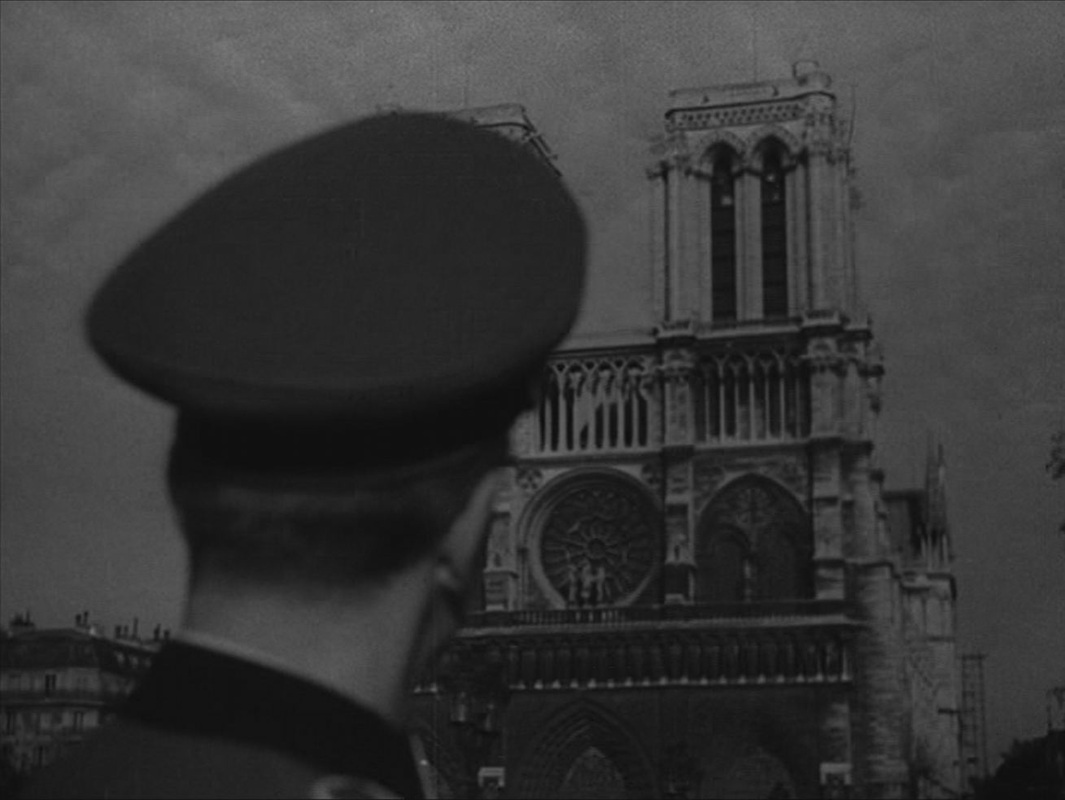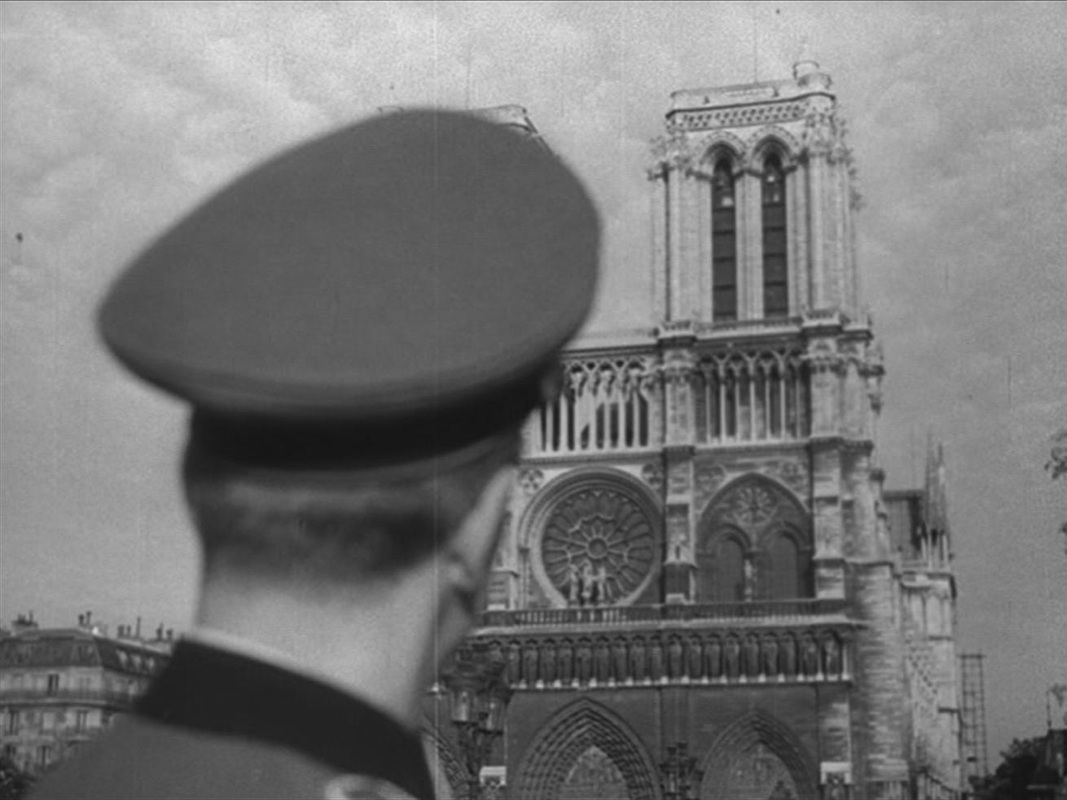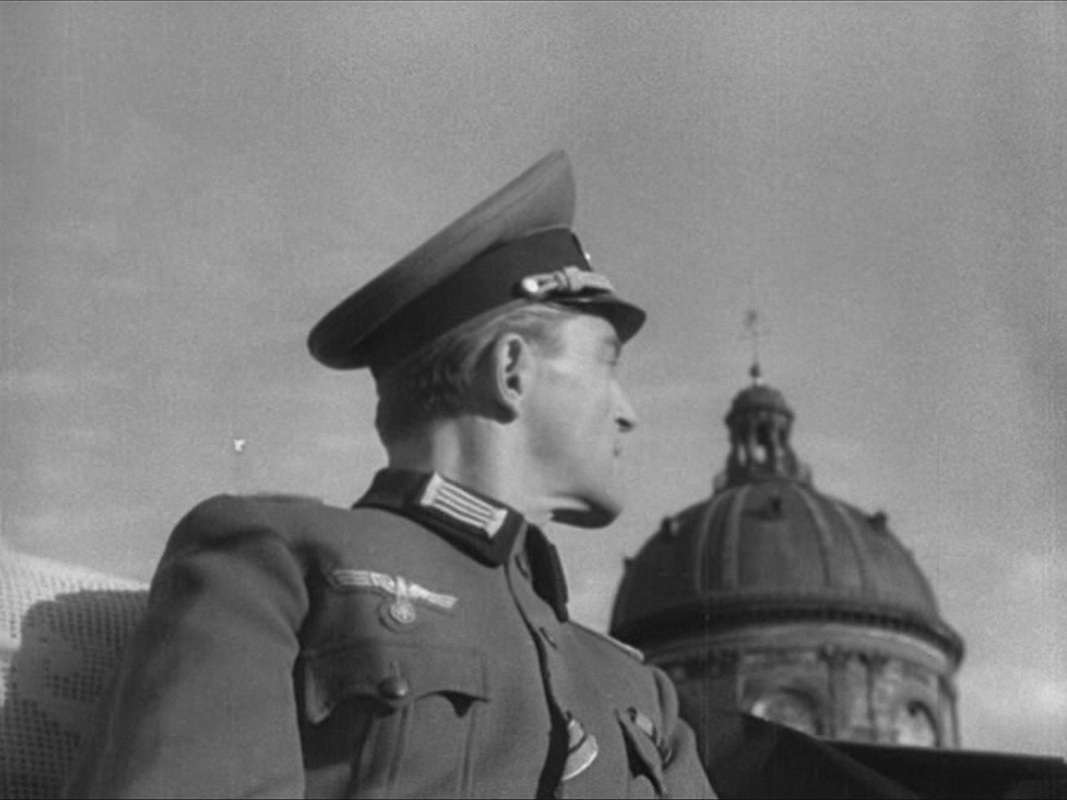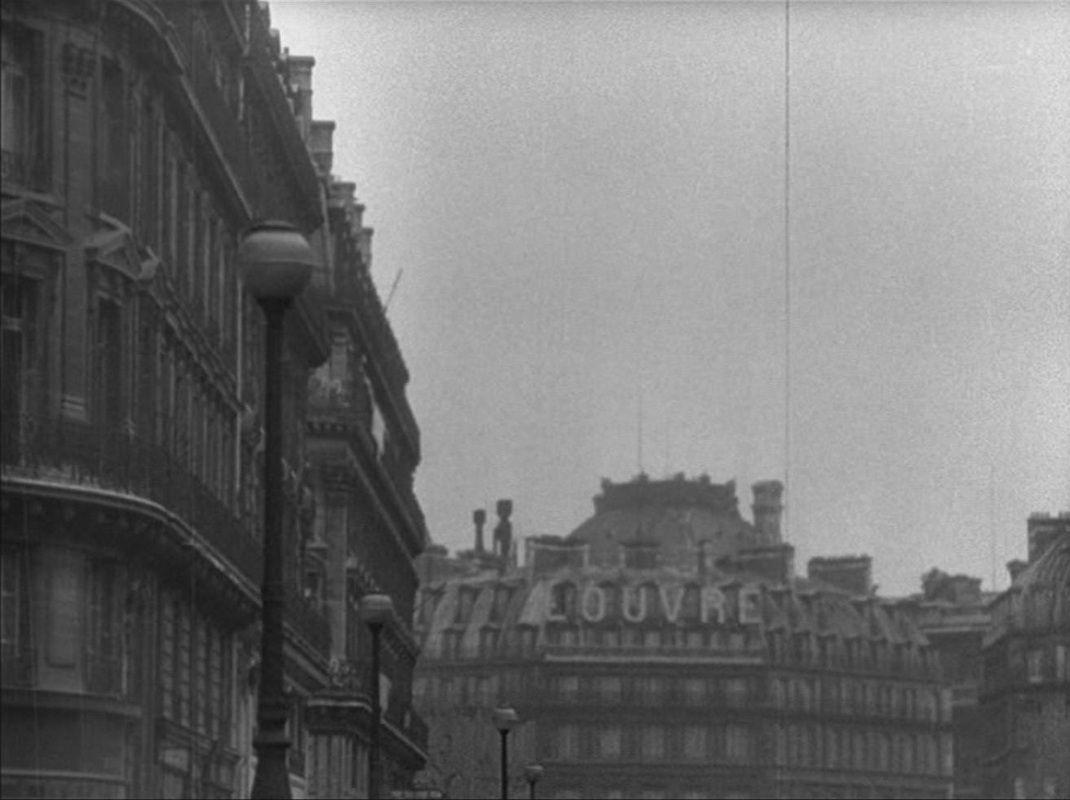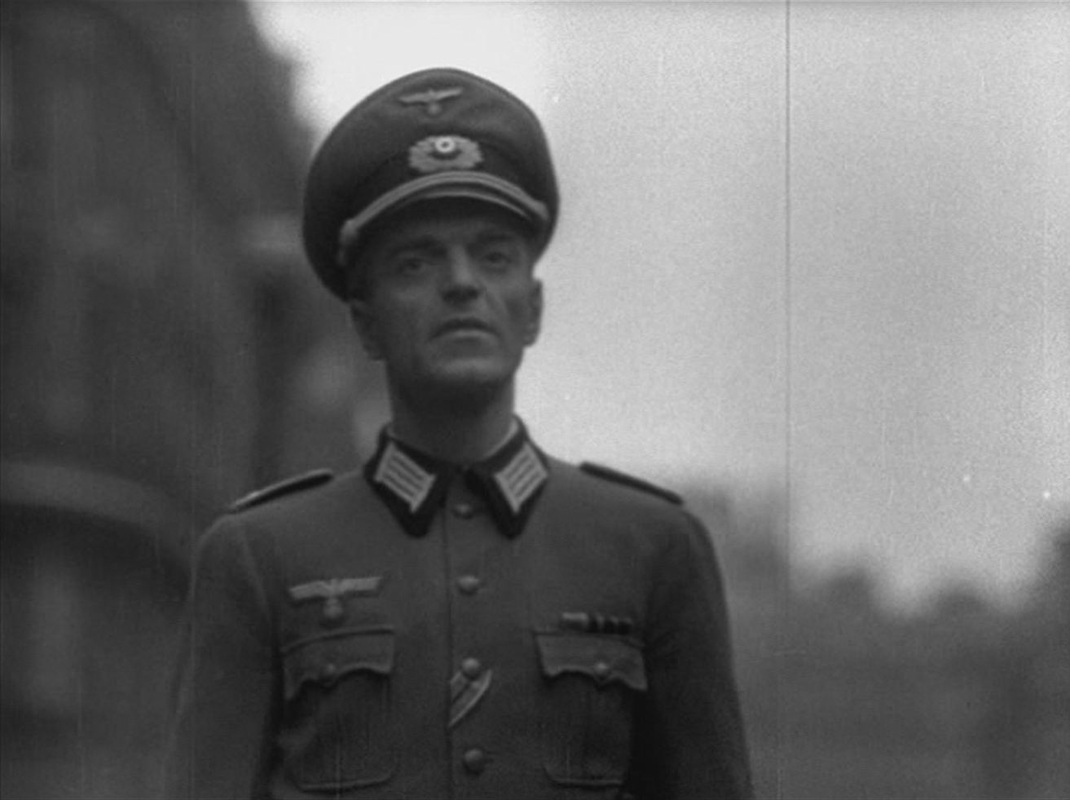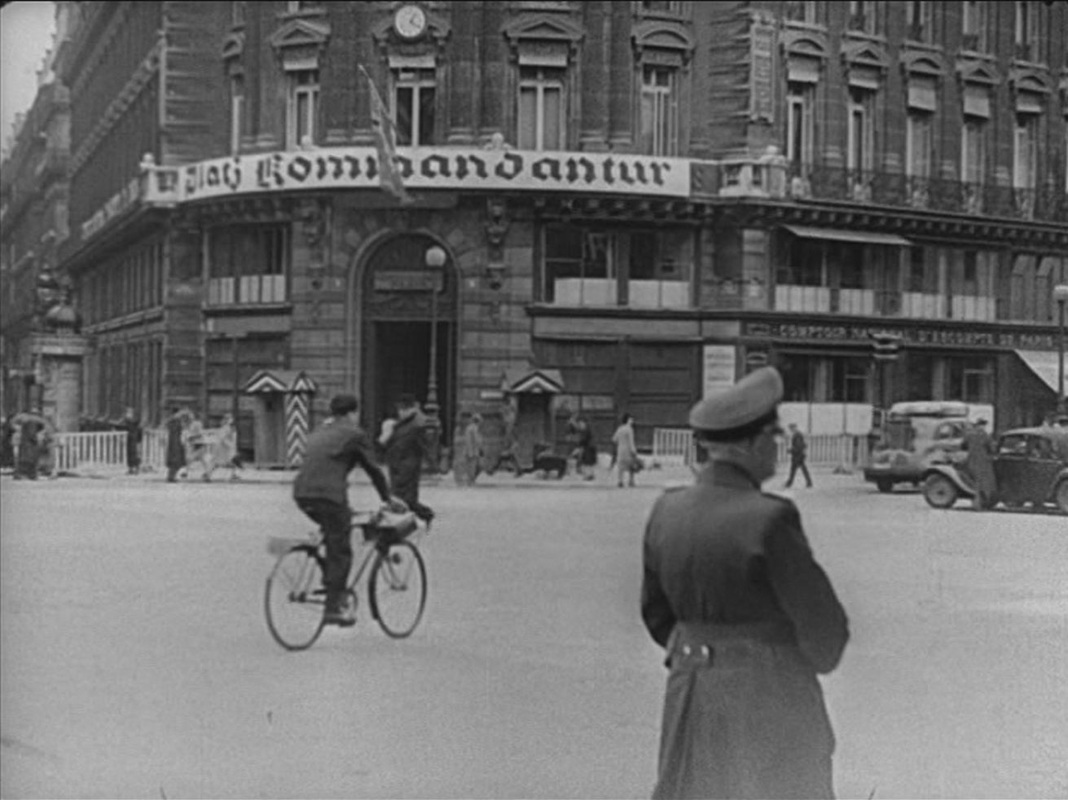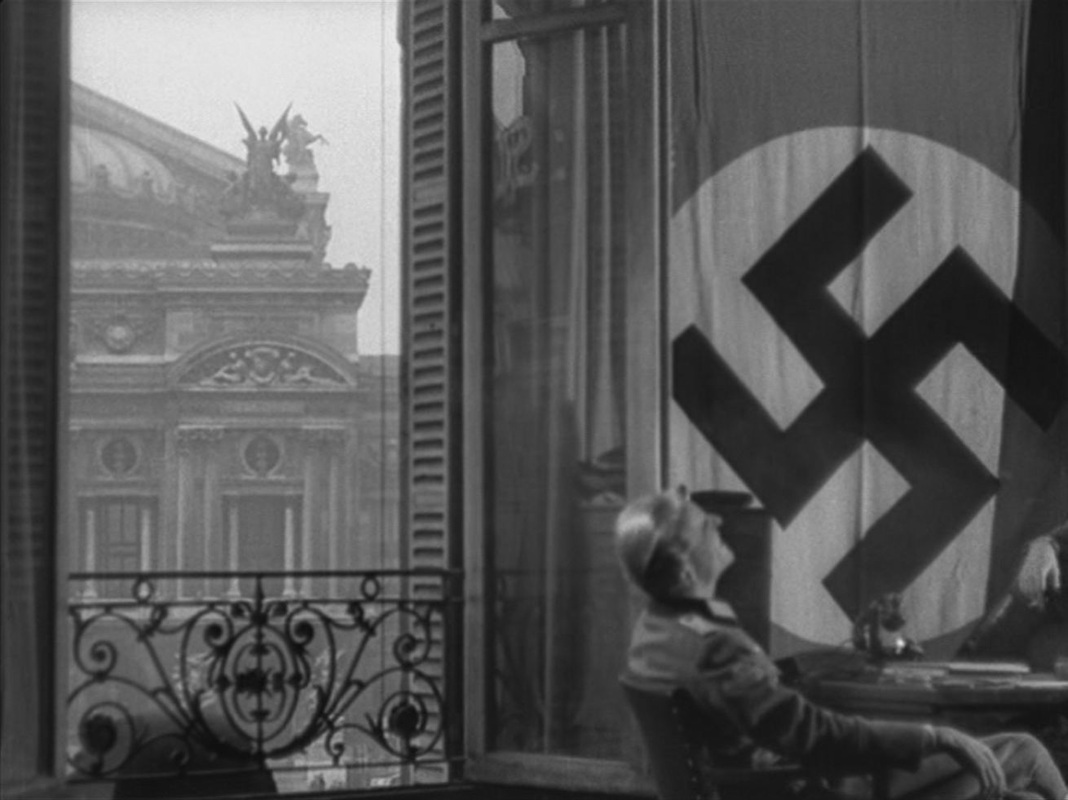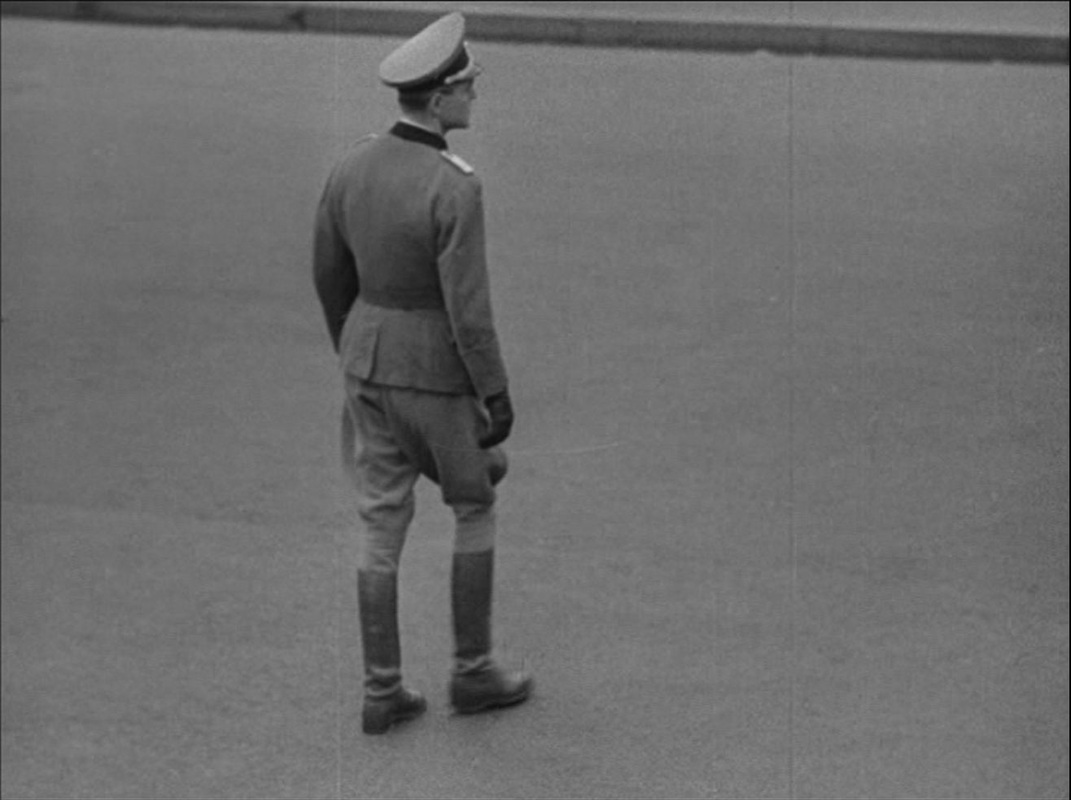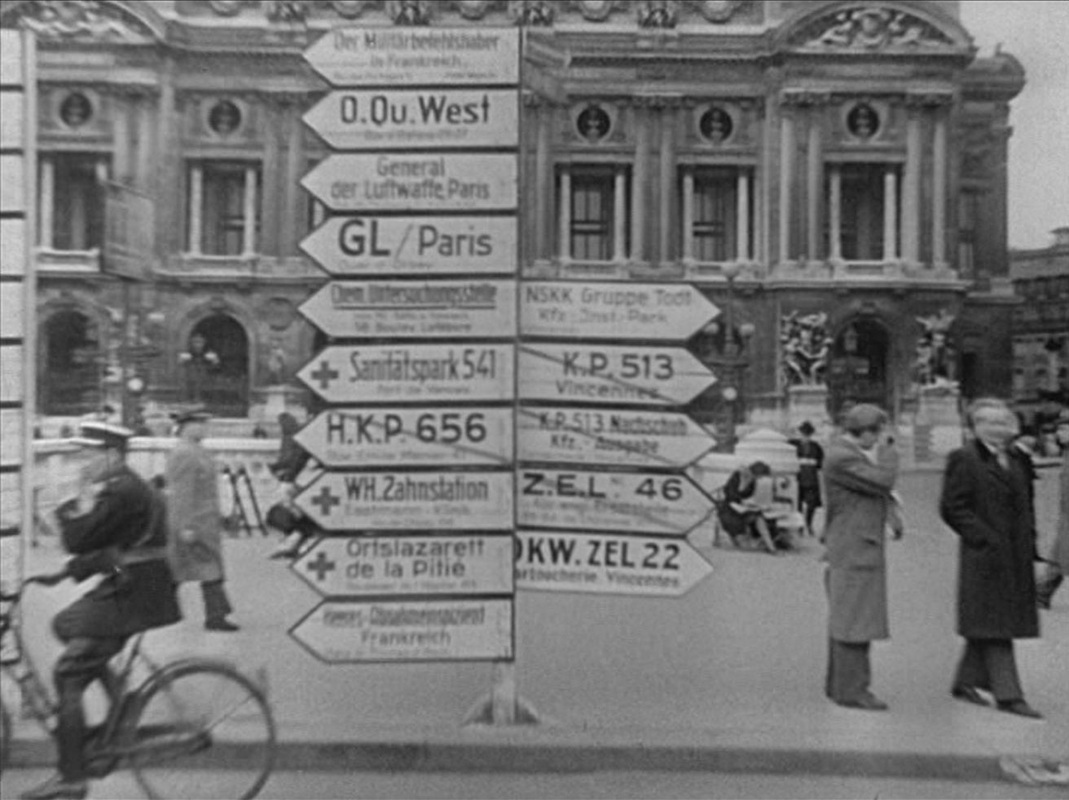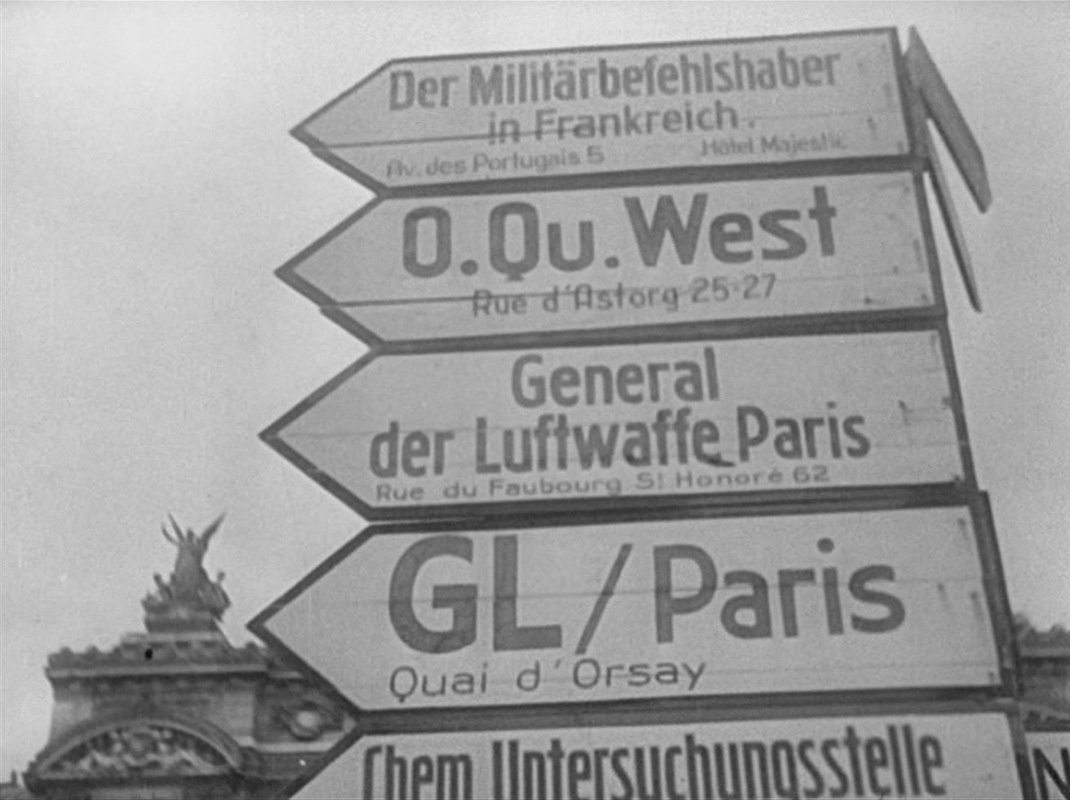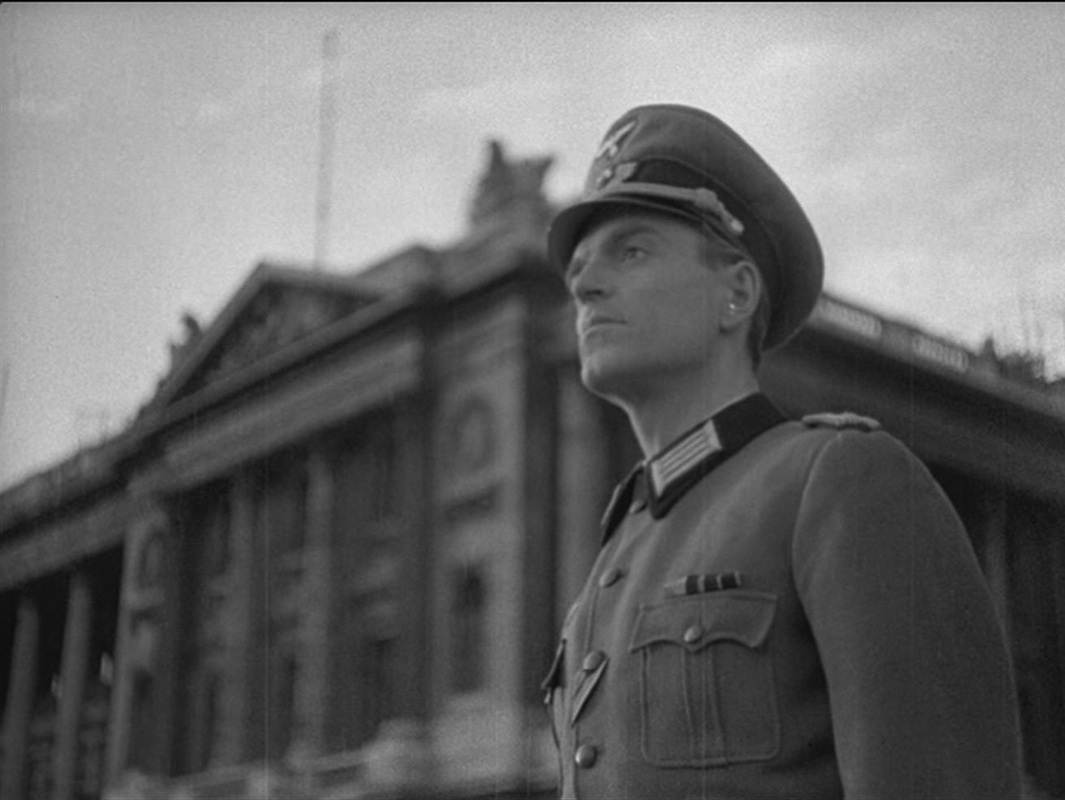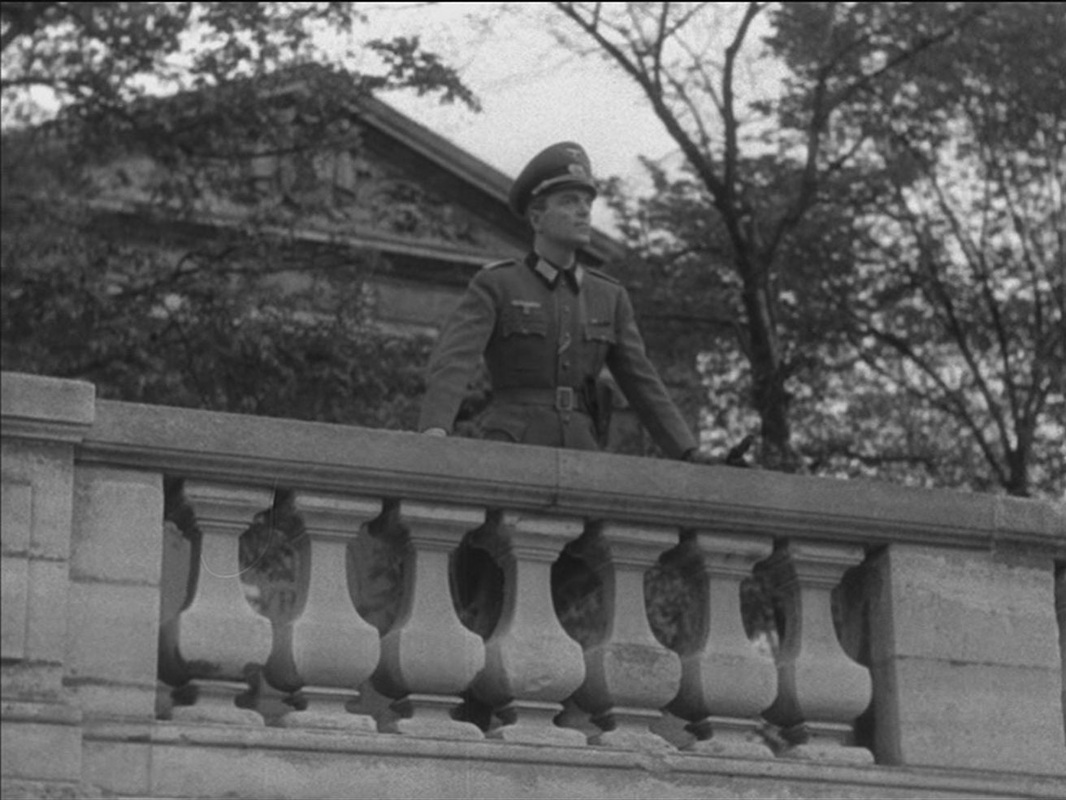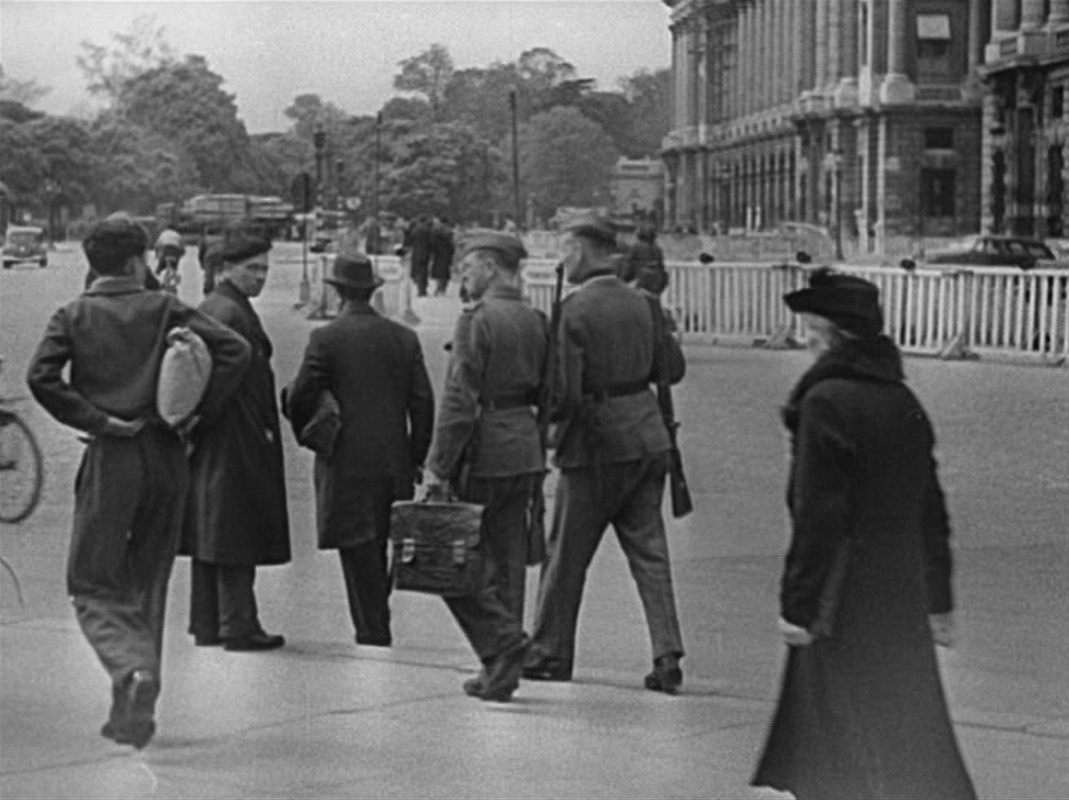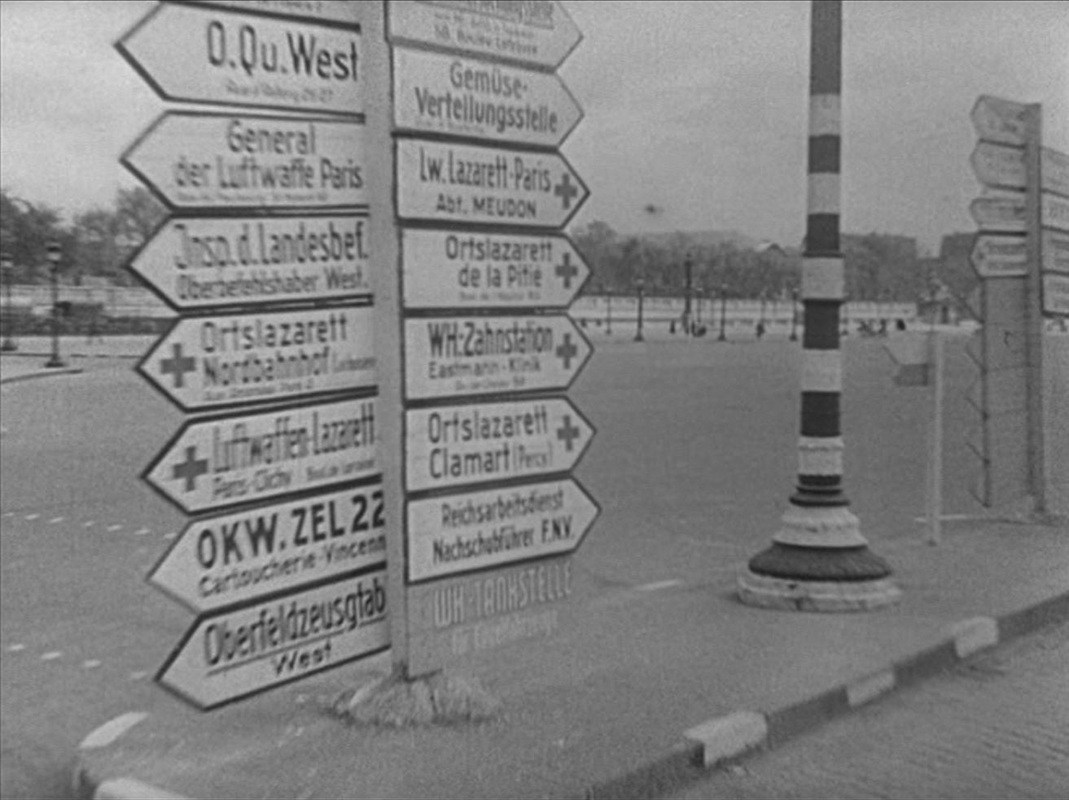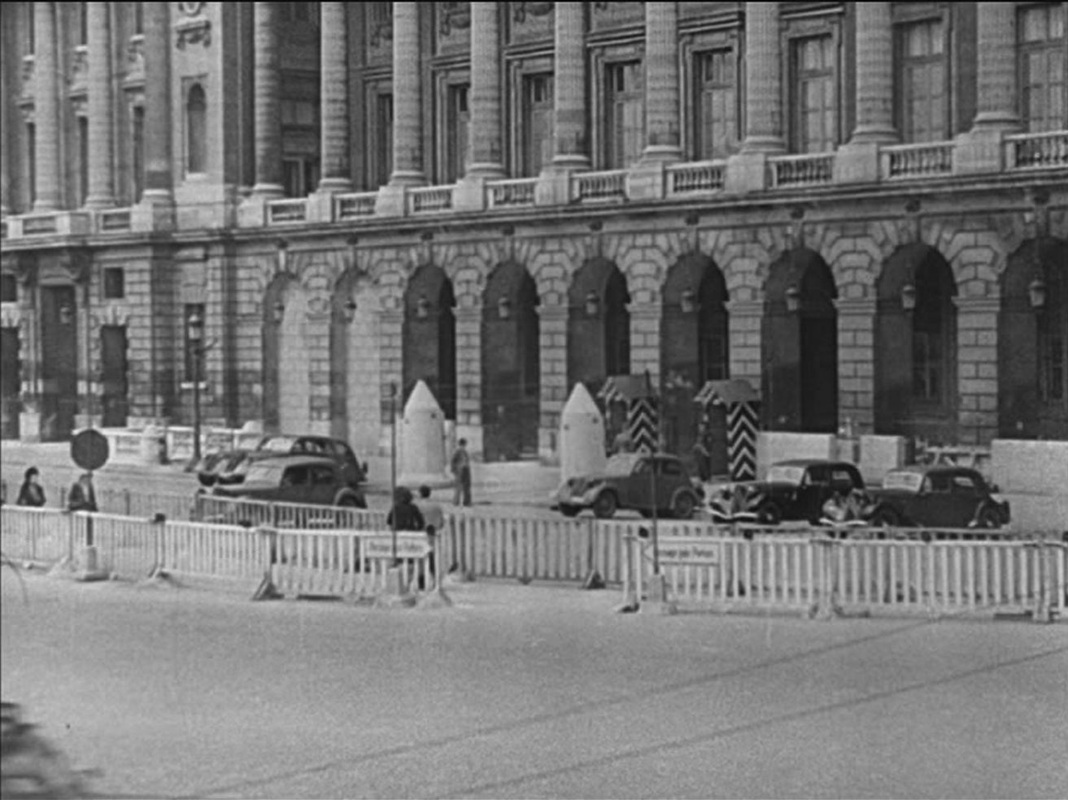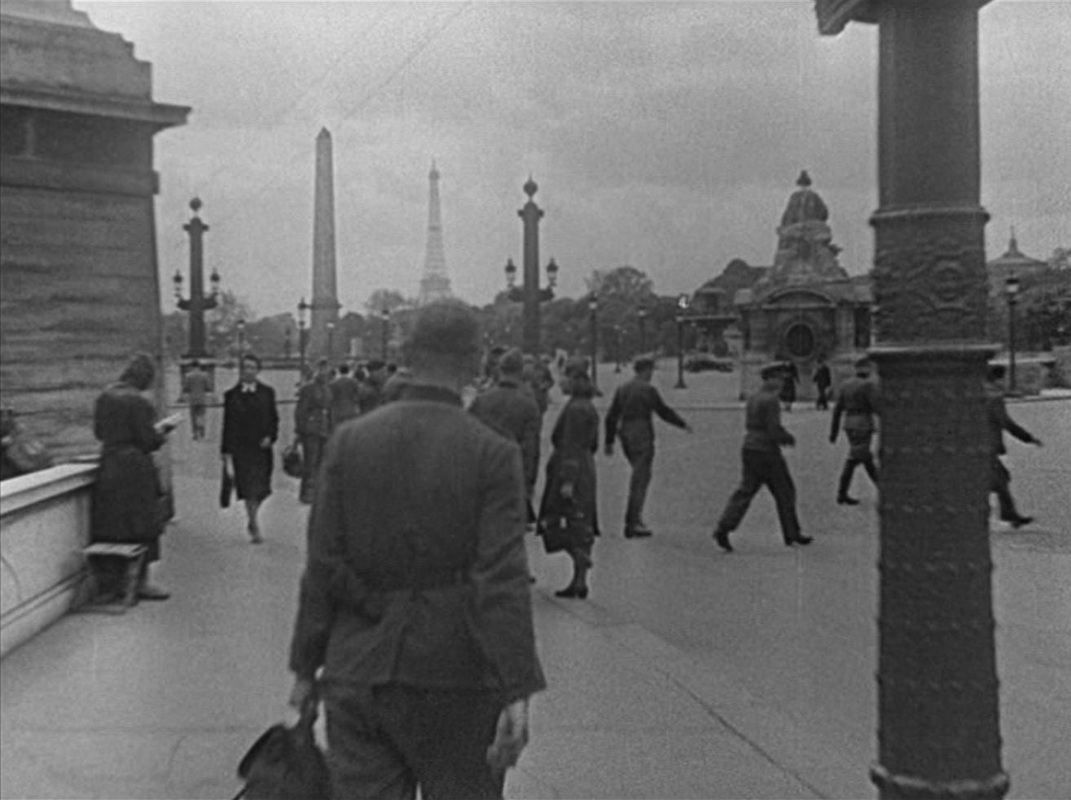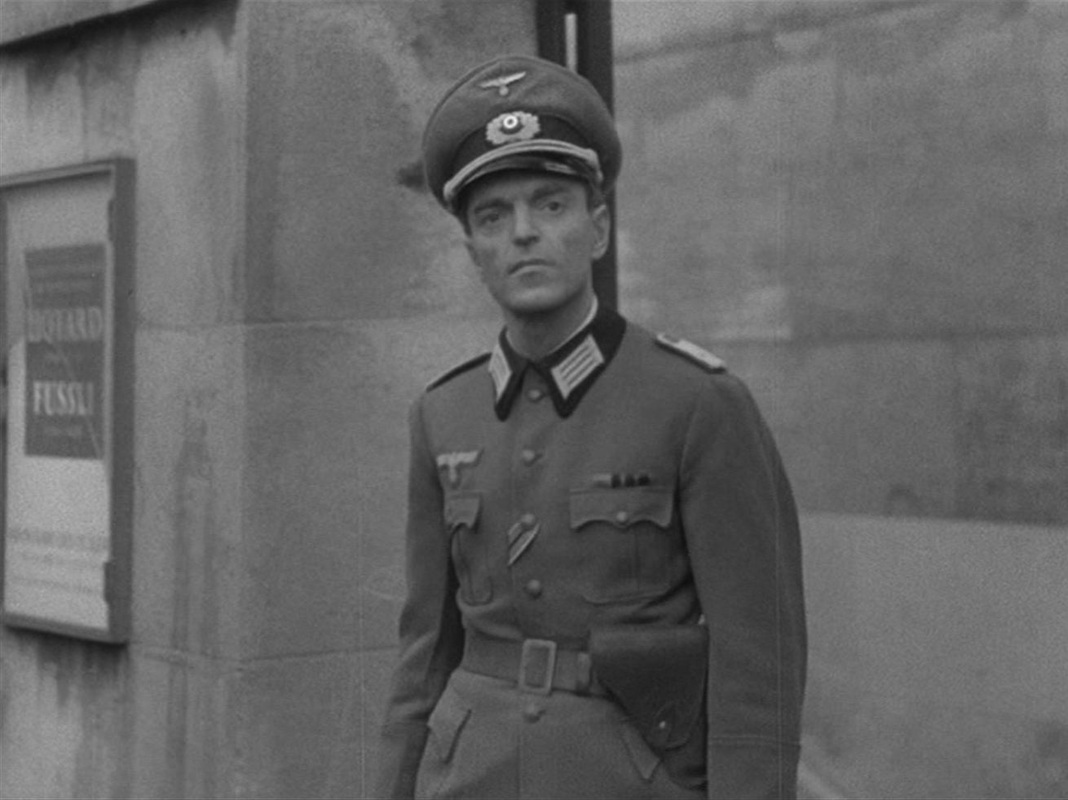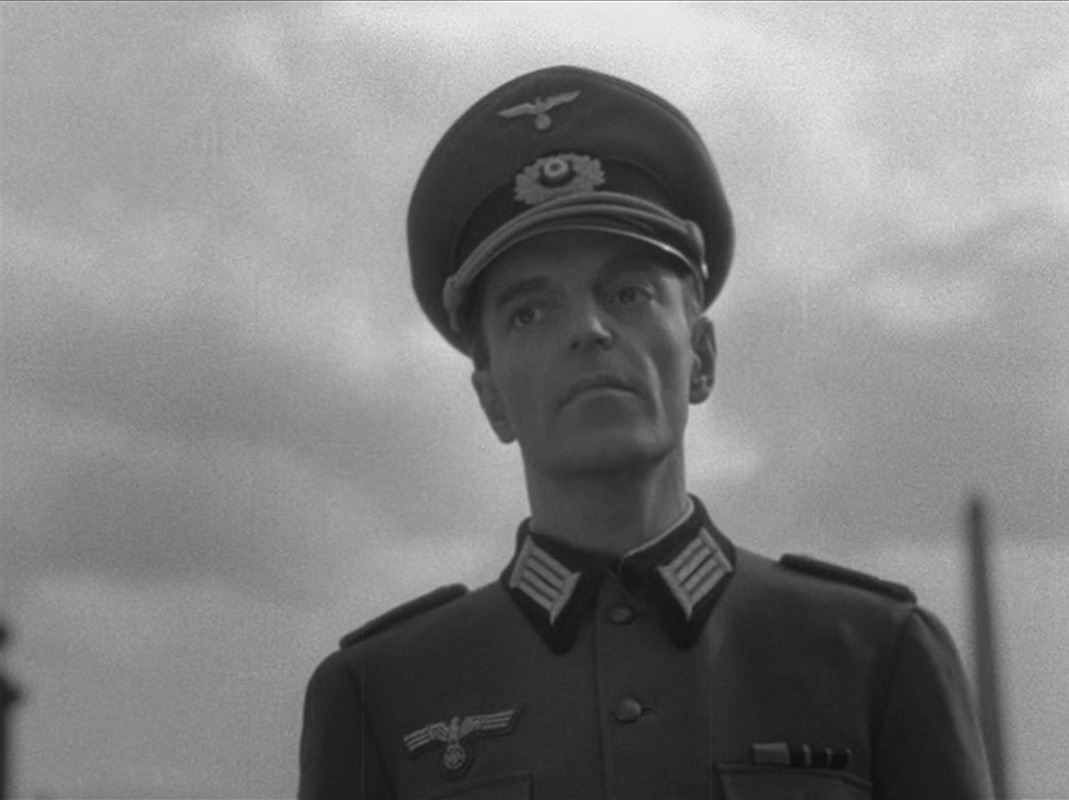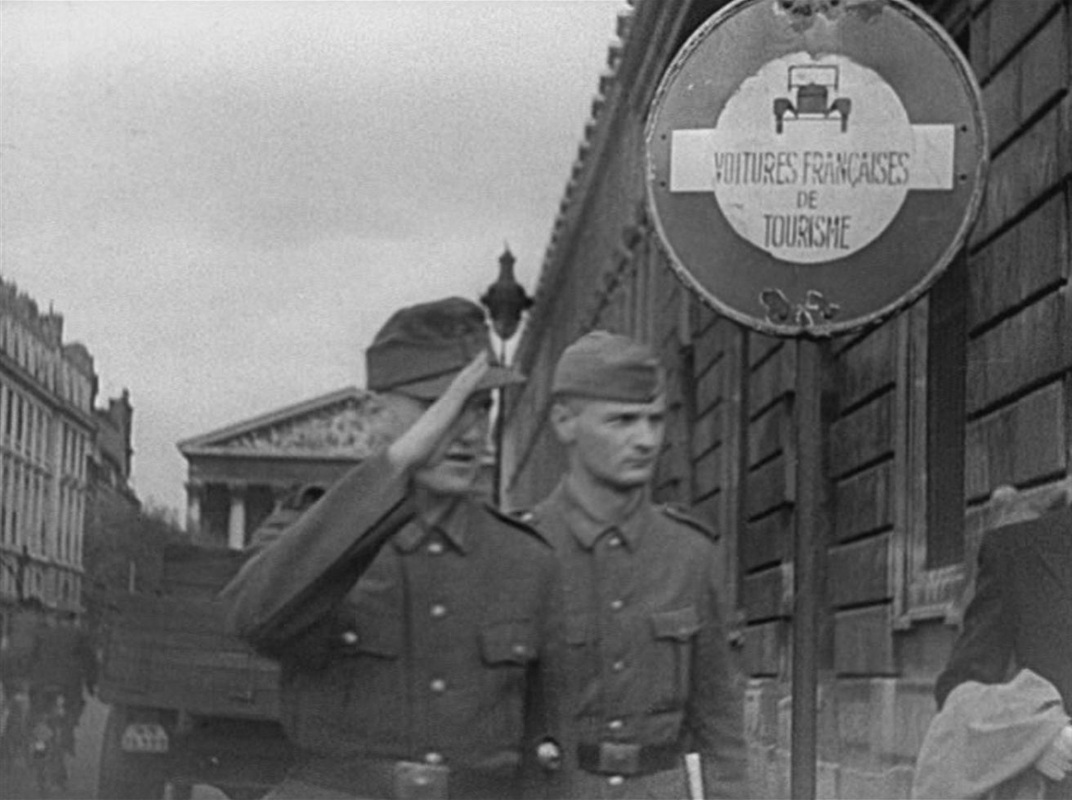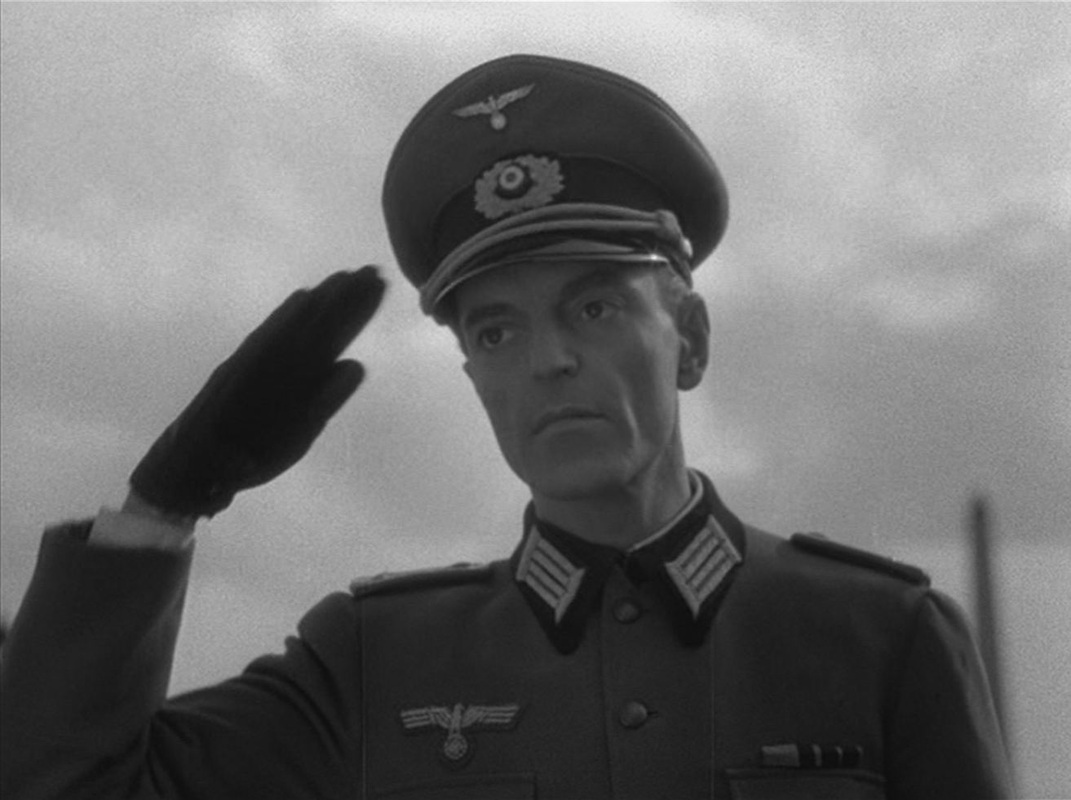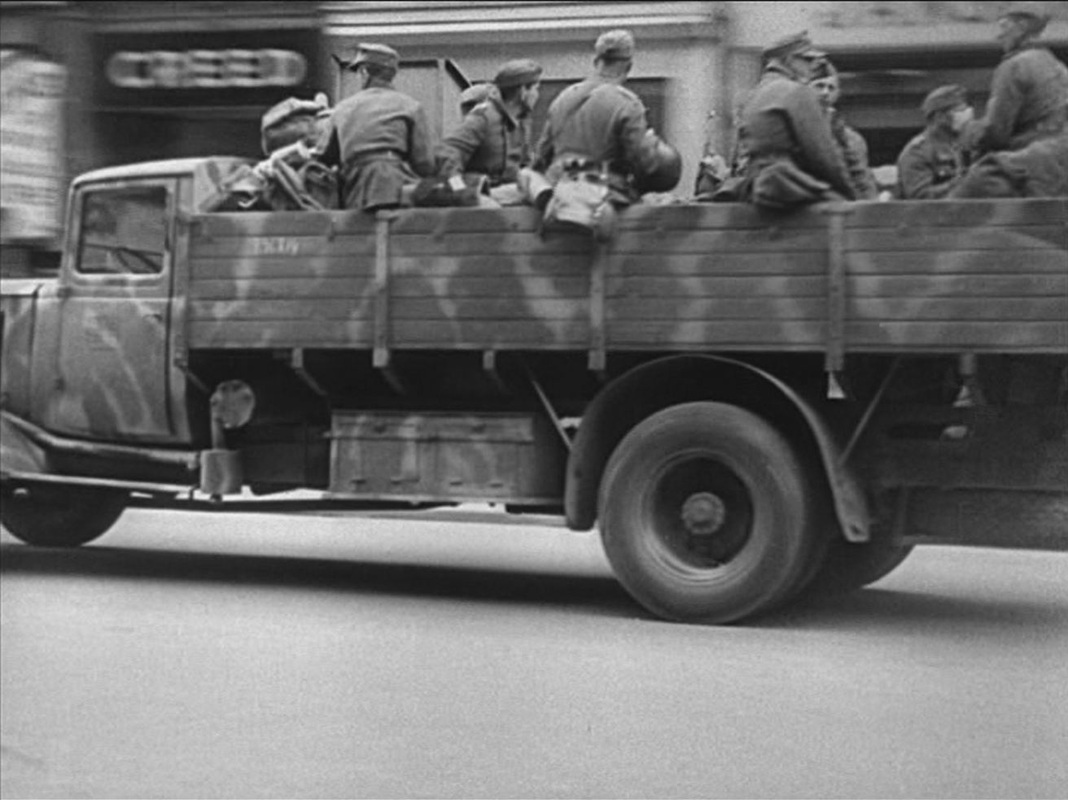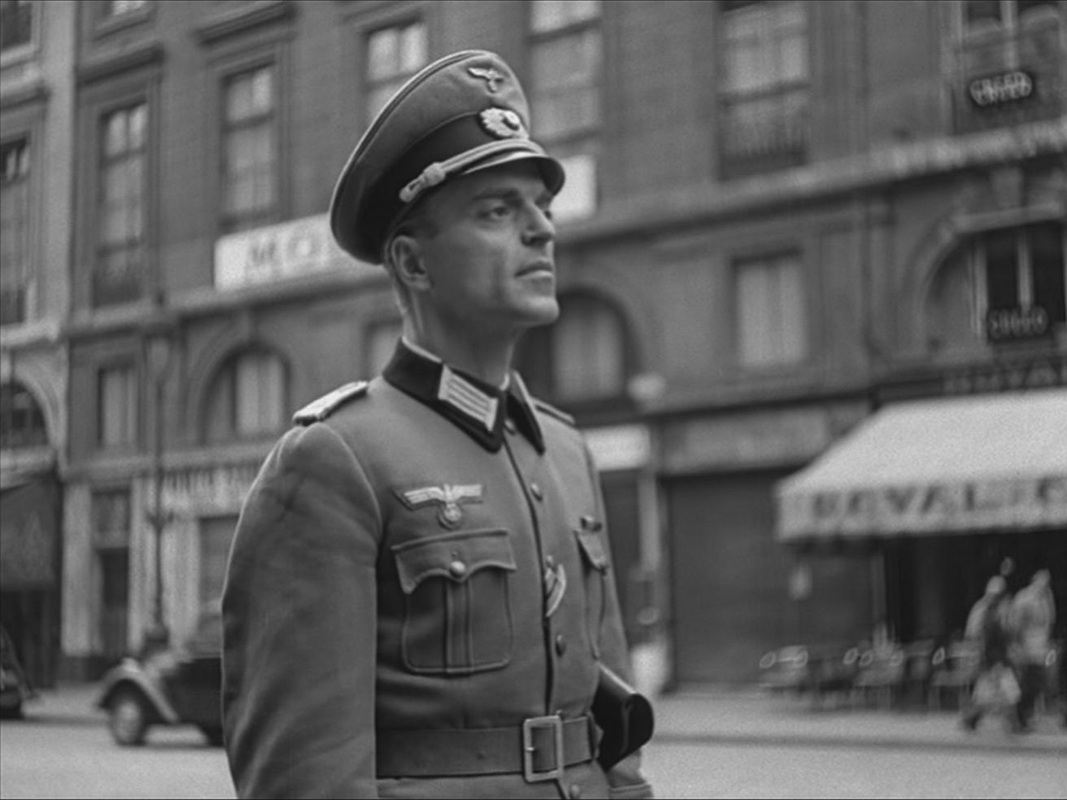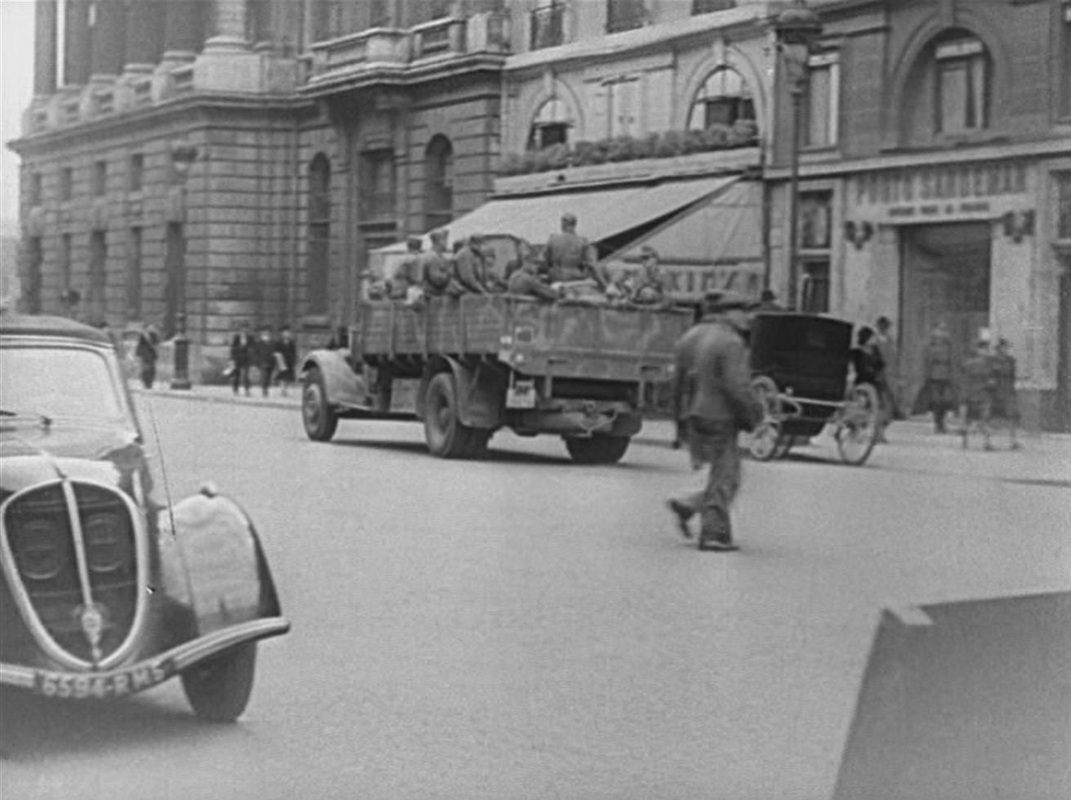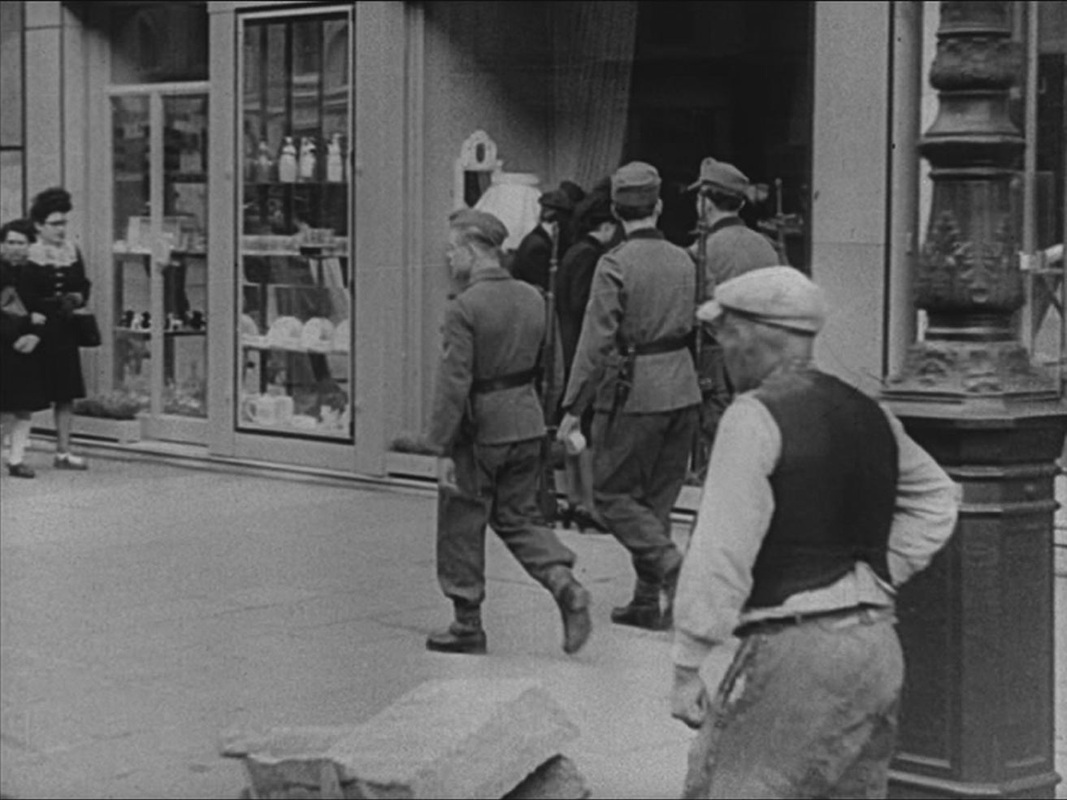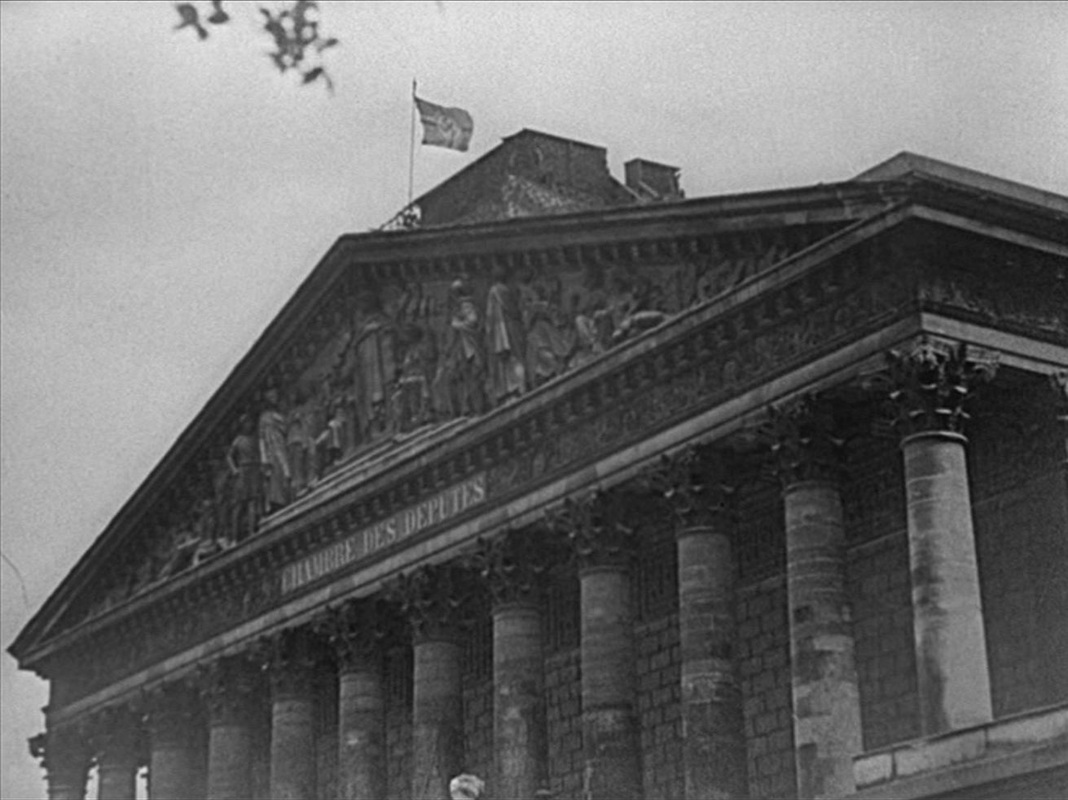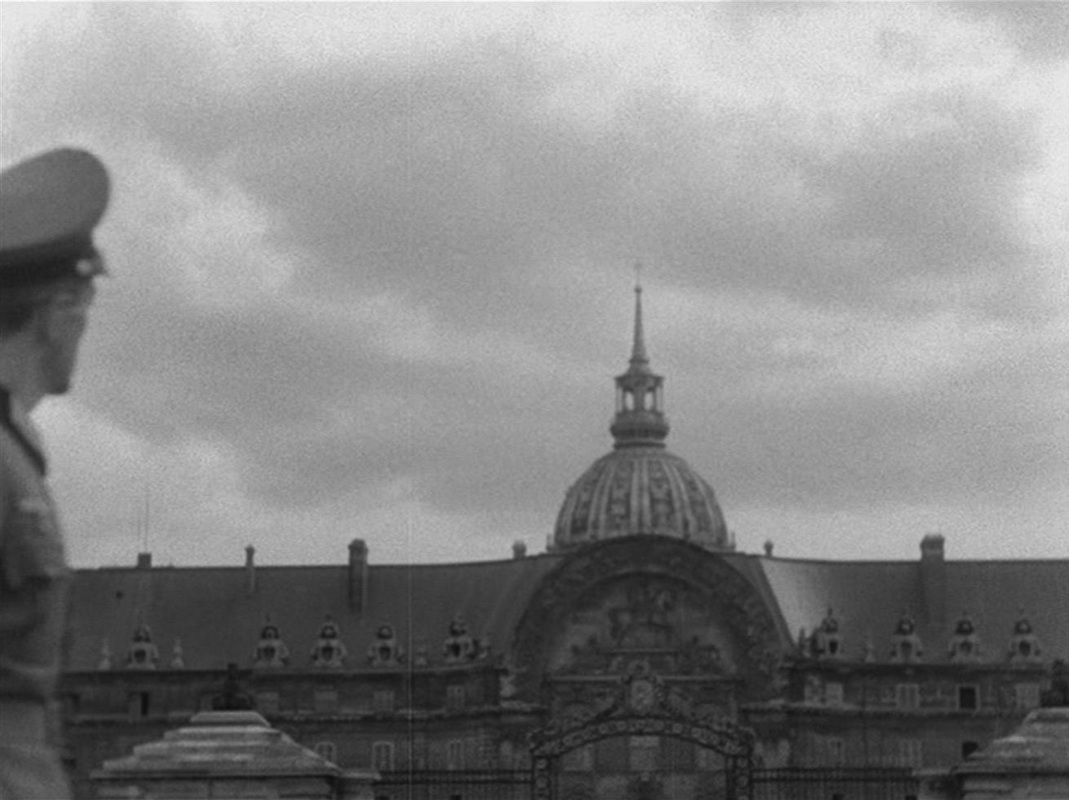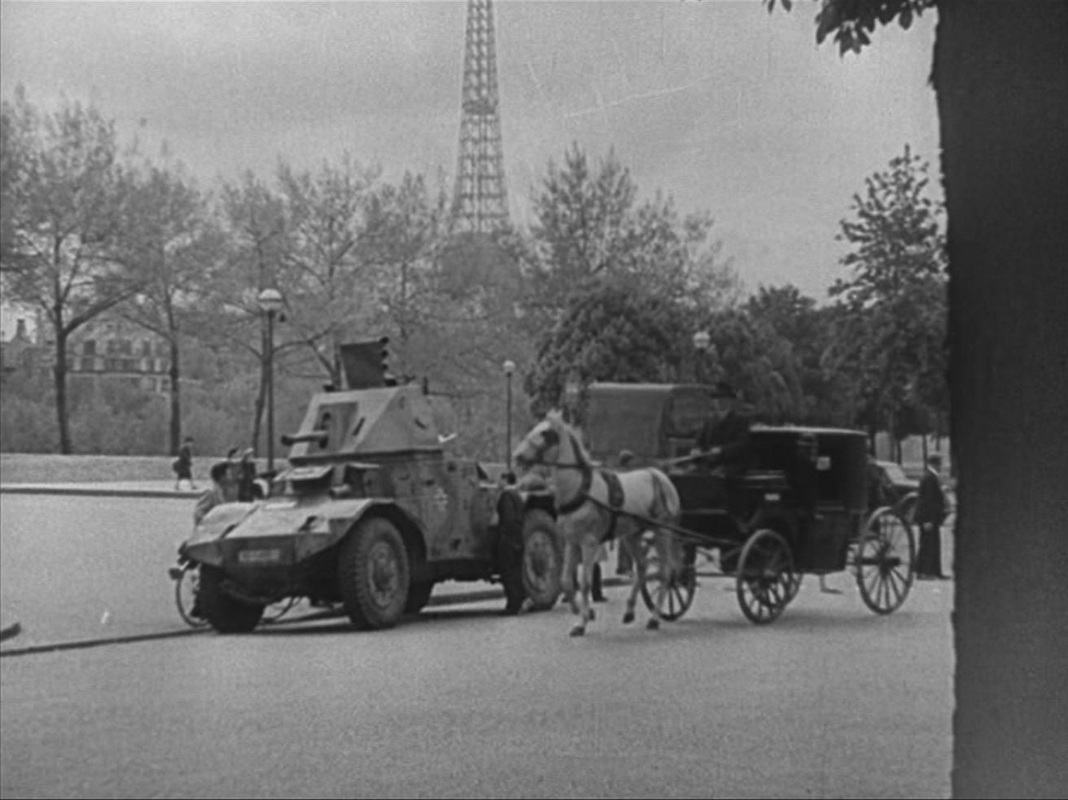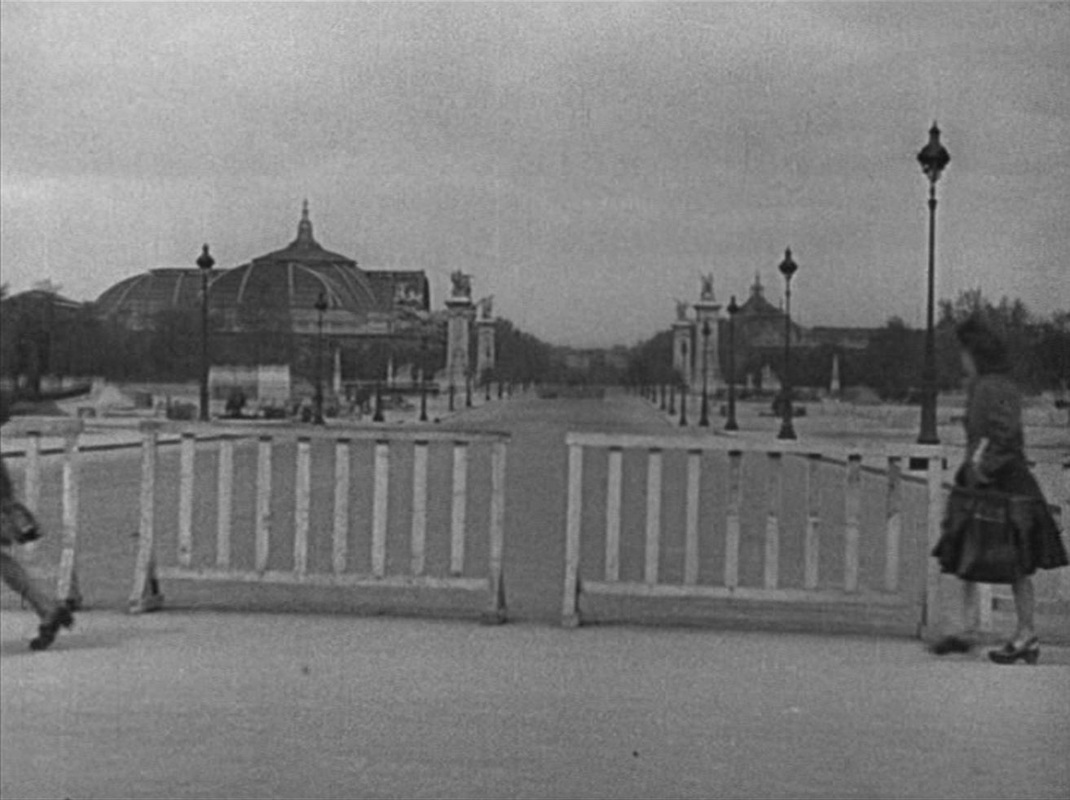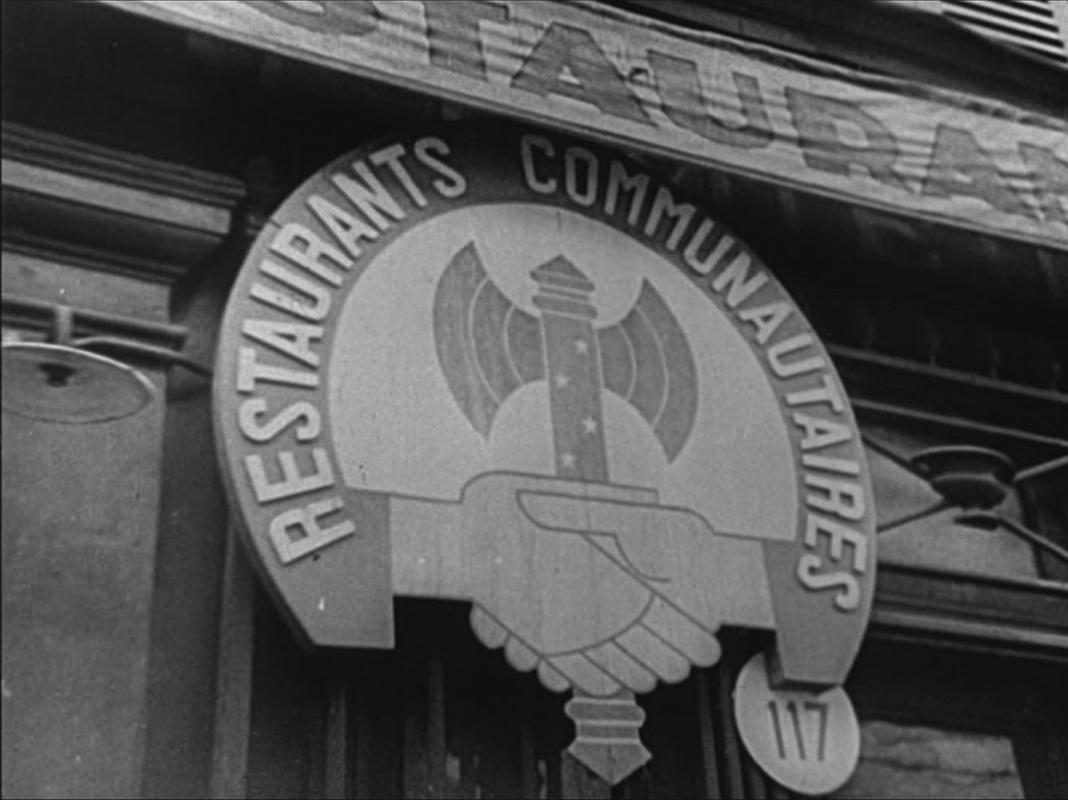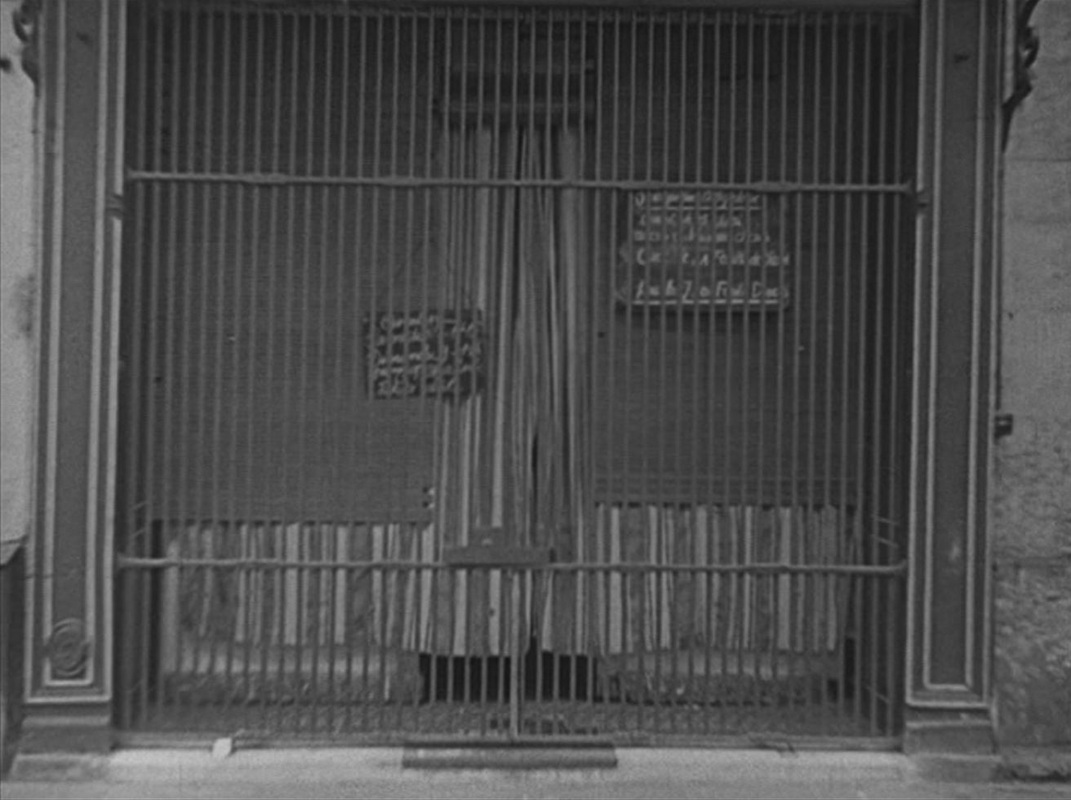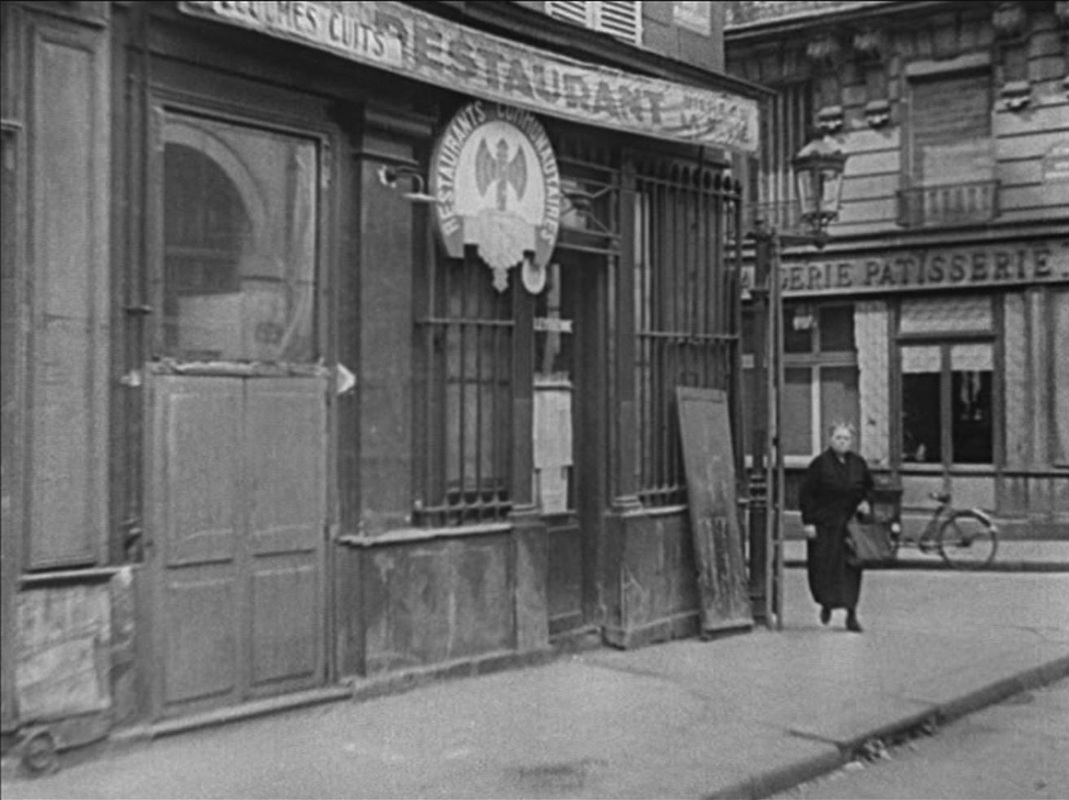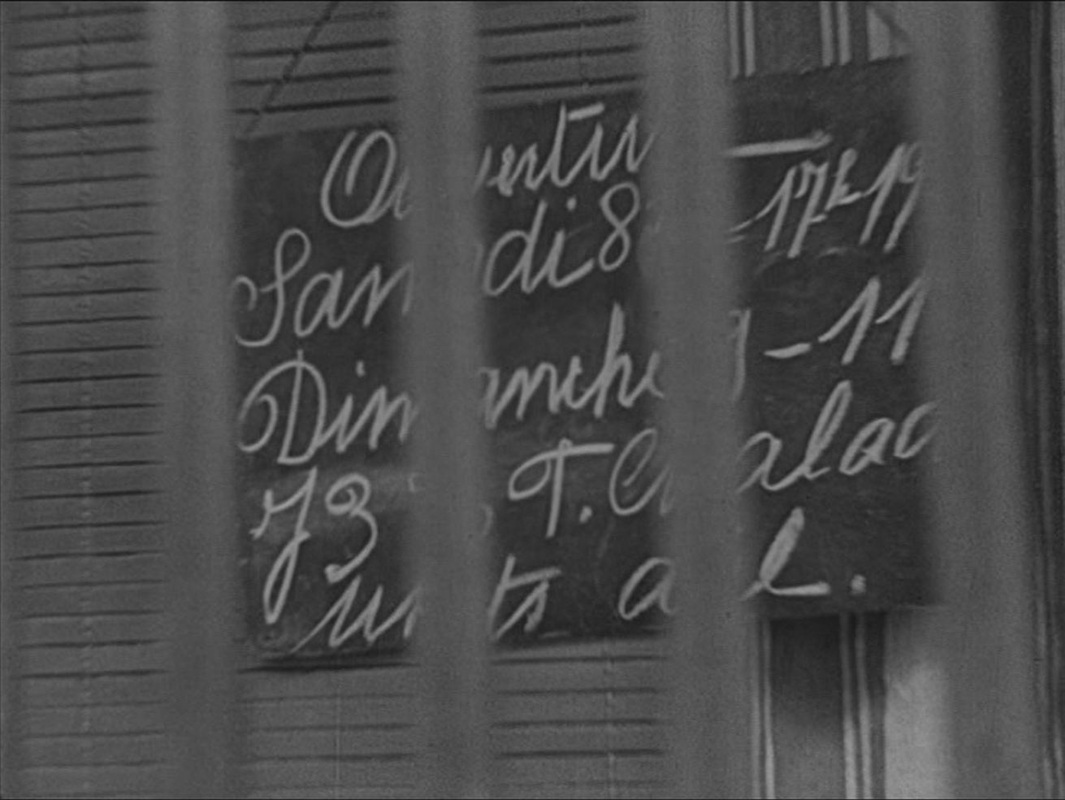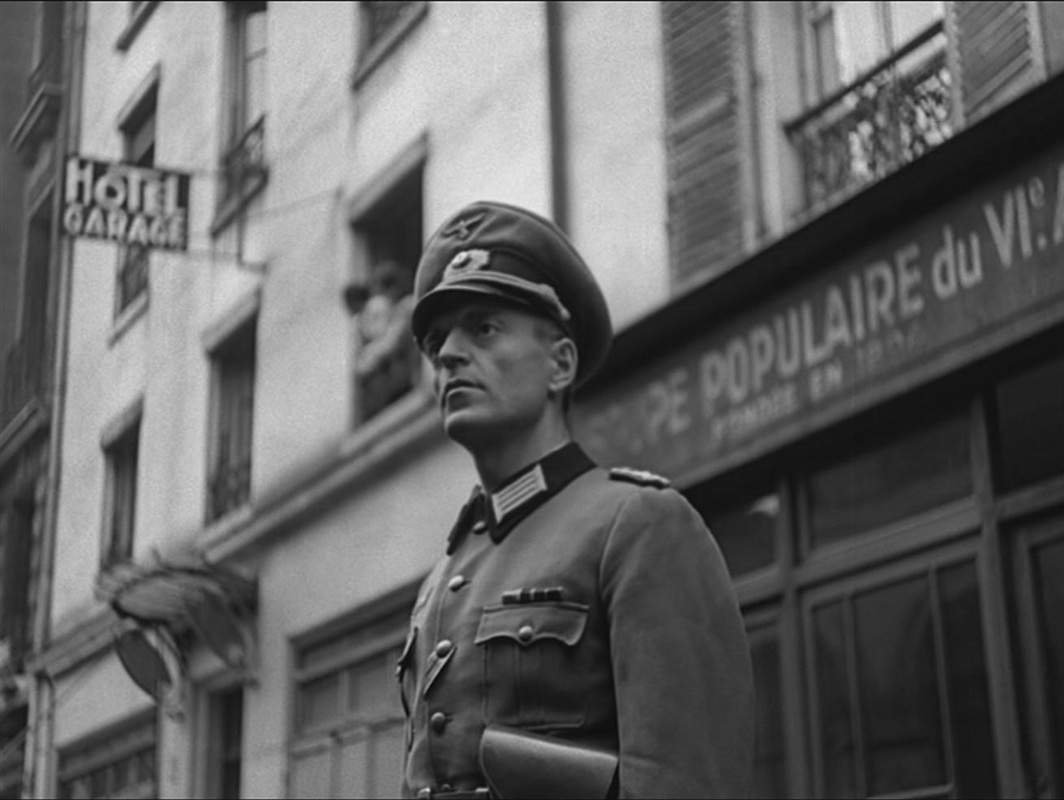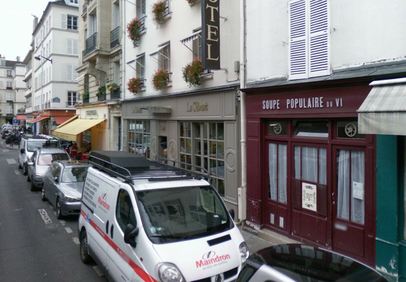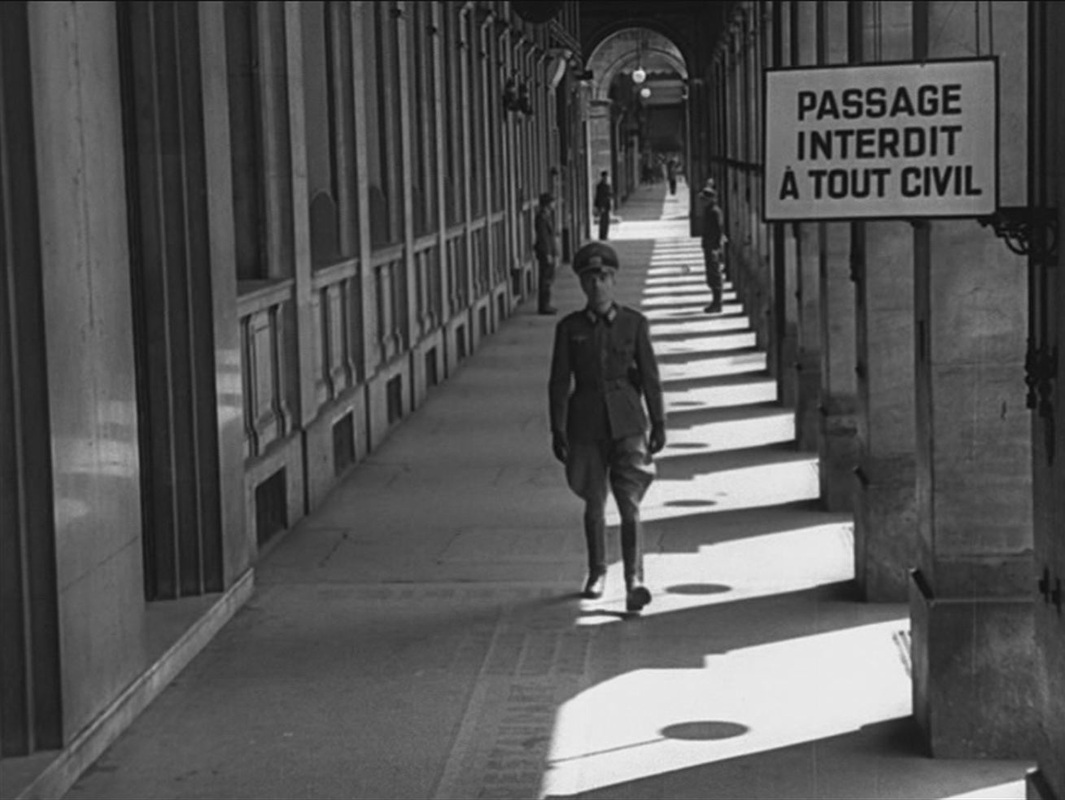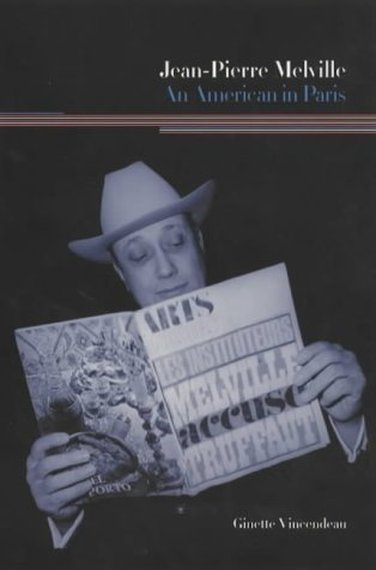In preparation for a period of leave in Paris, his first visit to the city, the German officer in Jean-Pierre Melville's Le Silence de la mer (1949) consults some books about France that he has just acquired. They include the above, Visages de l'Ile de France: Paris by Jean de la Monneraye, Auguste Dupouy and Roger-Armand Weigert, a collection of illustrated essays on various aspects of the city. Anachronistically, this edition seems to date from 1946, whereas the film is set in in 1941; at least one of the other three books he looks at is out of time, a posthumous volume on France by Jacques Bainville, published in 1946:
Von Ebrennac's visit to Paris is shown in two phases. In the first, he begins at the Arc de Triomphe, then after a wipe is shown in a horse-drawn carriage descending the Champs Elysées and turning into the avenue George V, past Fouquet's and (anachronistically, I think) the TWA offices:
After another wipe he is further down the avenue George V, in front of the American Church at no.23:
A dissolve brings him to the Louvre, and another dissolve followed by a slow pan finds him out of the carriage, looking up at the Arc du Carrousel:
A cut to a closer shot allows us to read the inscription on the monument, relating to Napoleon's victory at Austerlitz in 1805:
After another wipe we read the inscription on the plinth bearing a statue of Joan of Arc (place Saint Augustin, 8e), referring to her mission to 'bouter' the English out of France:
The camera pans to show us von Ebrennac, on foot, in contemplation of the statue, with behind him the church of Saint Augustin:
A wipe reveals him back in his carriage, crossing the Pont Neuf, with the quai des Orfèvres in the background:
He is crossing from the rive gauche towards the rive droite, when in the previous shot he was already north of the river, up near the boulevard Haussmann. There is no effort here to suggest that this is a coherent itinerary. In the next shot he is on an anonymous stretch of boulevard (or, rather, I just can't identify it), and then, after a curious double wipe meeting in the centre, he is on the île de la Cité, standing in front of Notre Dame:
This first sequence ends on a fade to black as he turns to look at the cathedral. Seven minutes later the second part of the account of his trip begins where the first left off, fading up from black as he completes the movement:
This second part is told as flashback, as he describes his disappointment at the attitude of his fellow Germans in Paris towards his own idealised fantasy of the union of France with Germany.
The structure of this second phase is more complex, though it begins as the same kind of travelogue, following Notre Dame with a view of him, again in his carriage, on the quai de Conti passing in front of the Institut de France:
The structure of this second phase is more complex, though it begins as the same kind of travelogue, following Notre Dame with a view of him, again in his carriage, on the quai de Conti passing in front of the Institut de France:
Here the manner of the montage changes. We are on the avenue de l'Opéra, at the junction with the rue Sainte Anne, looking down towards the Hôtel du Louvre. Von Ebrennac steps into the frame, and the background disappears from focus:
His gaze is directed up the avenue, towards the Opéra Garnier. To the right are the rue Thérèse and the rue de Ventadour:
Hitherto Melville's method had been simply to place his actor Howard Vernon in his German uniform in various parts of Paris, choosing locales that in 1948 could pass for what they were like in 1941. From here on Melville combines such shots with period footage from the Occupation, populating Paris with Germans in uniform, when in the previous sequence there appeared to be no Germans in Paris other than von Ebrennac. The view above is period footage, though the only marker of that is very discrete: the briefly glimpsed man in uniform, to the right.
After another shot of von Ebrennac looking, more footage shows us what he is looking at. Here we are unambiguously in occupied Paris:
After another shot of von Ebrennac looking, more footage shows us what he is looking at. Here we are unambiguously in occupied Paris:
I cannot identify the street above, though it isn't the avenue de l'Opéra (which is not tree-lined). The next recognisable view is once again of the avenue de l'Opéra. To the sight of Germans in uniform is added signage in German and a German flag:
This is the Platz Kommandantur der Kommandanten von Gross-Paris (2, place de l'Opéra), a focal point of the German administration. Here Melville suspends the montage of tourist sites for one shot to show von Ebrennac inside this building, in a room overlooking the opera house:
After this scene the tour continues, again combining views shot in 1948 with footage from the Occupation:
From the place de l'Opéra von Ebrennac goes to the place de la Concorde:
The poster behind Howard Vernon (below left) is for a 1948 exhibition at the Orangerie of work by Swiss painters Liotard and Fuseli, a minor anachronism of no consequence whatsoever:
Standing his actor in the rue Royale, with his back to the place de la Concorde, Melville engineers an exchange of salutes across the five or so years that separate these two shots:
Still on the rue Royale, he watches a lorry full of German soldiers going past Maxim's and into the place de la Concorde, and then some soldiers on foot passing the fashionable shops further up the street:
His tour takes him to the Chambre des Députés (flying a German flag), the Eiffel Tower (with a German armoured vehicle in the foreground) and the Esplanade des Invalides, with views looking south and north:
The emphasis shifts to a more day-to-day vision of Paris, with footage of a 'community restaurant' and its collaborationist signage, and a shopfront with signs indicating (I think) restricted supplies:
The restaurant is at 14 rue Mabillon, 6e, just by the Marché Saint Germain, which may be where the shopfront is.
Between the restaurant and the shop Melville stands von Ebrennac in front of a 'soup kitchen' on the rue Clément, just around the corner:
Between the restaurant and the shop Melville stands von Ebrennac in front of a 'soup kitchen' on the rue Clément, just around the corner:
Here are the restaurant and soup kitchen in 2008:
The last stop on von Ebrennac's tour is the rue de Rivoli, more exactly a view towards the entrance of the Hôtel Continental, outside which Melville has placed two German guards - the hotel had been commandeered during the Occupation:
Other than the shots of Howard Vernon, this is I think the only instance where Melville constructs a view of occupied Paris, rather than using existing footage. It brings an end to the tour, as von Ebrennac goes on to narrate how his illusions about the francophilia of his fellow Germans were dispelled.
See here for the maps in Le Silence de la mer.
For more about the making and meaning of Melville's film, see Ginette Vincendeau's notes in the accompanying booklet to the Masters of Cinema edition, or the relevant chapter in her Jean-Pierre Melville: an American in Paris (London: BFI, 2003)
See here for the maps in Le Silence de la mer.
For more about the making and meaning of Melville's film, see Ginette Vincendeau's notes in the accompanying booklet to the Masters of Cinema edition, or the relevant chapter in her Jean-Pierre Melville: an American in Paris (London: BFI, 2003)
